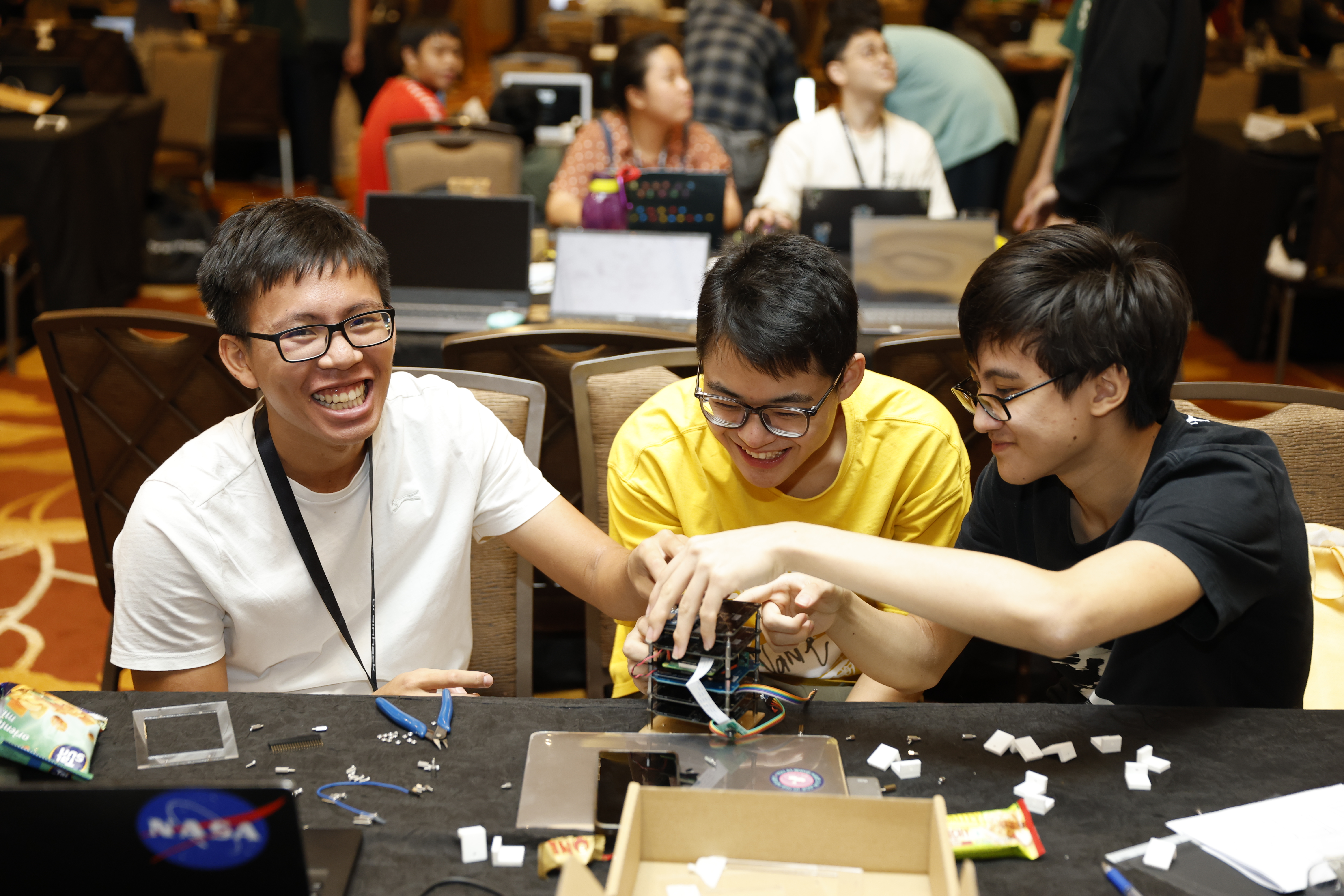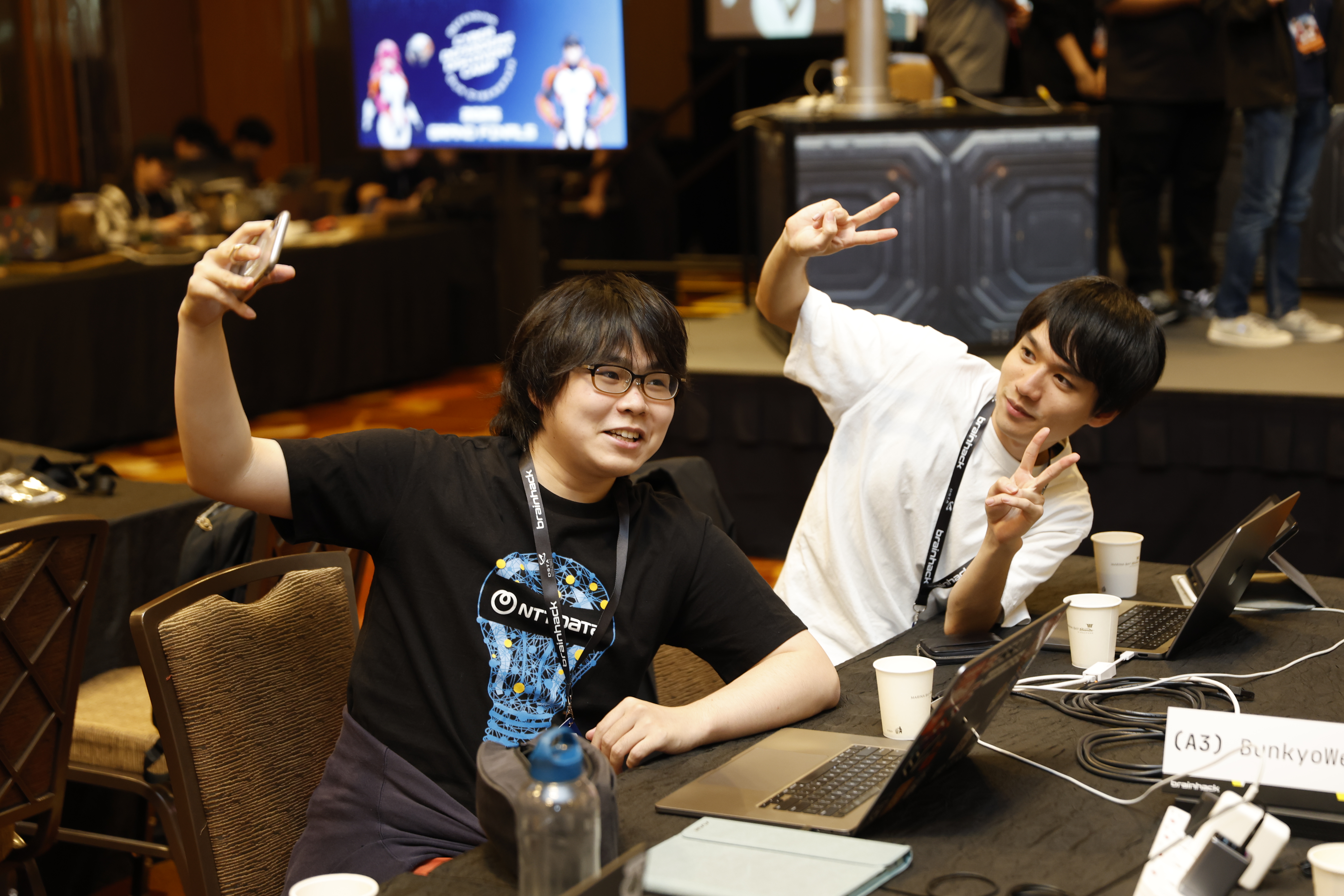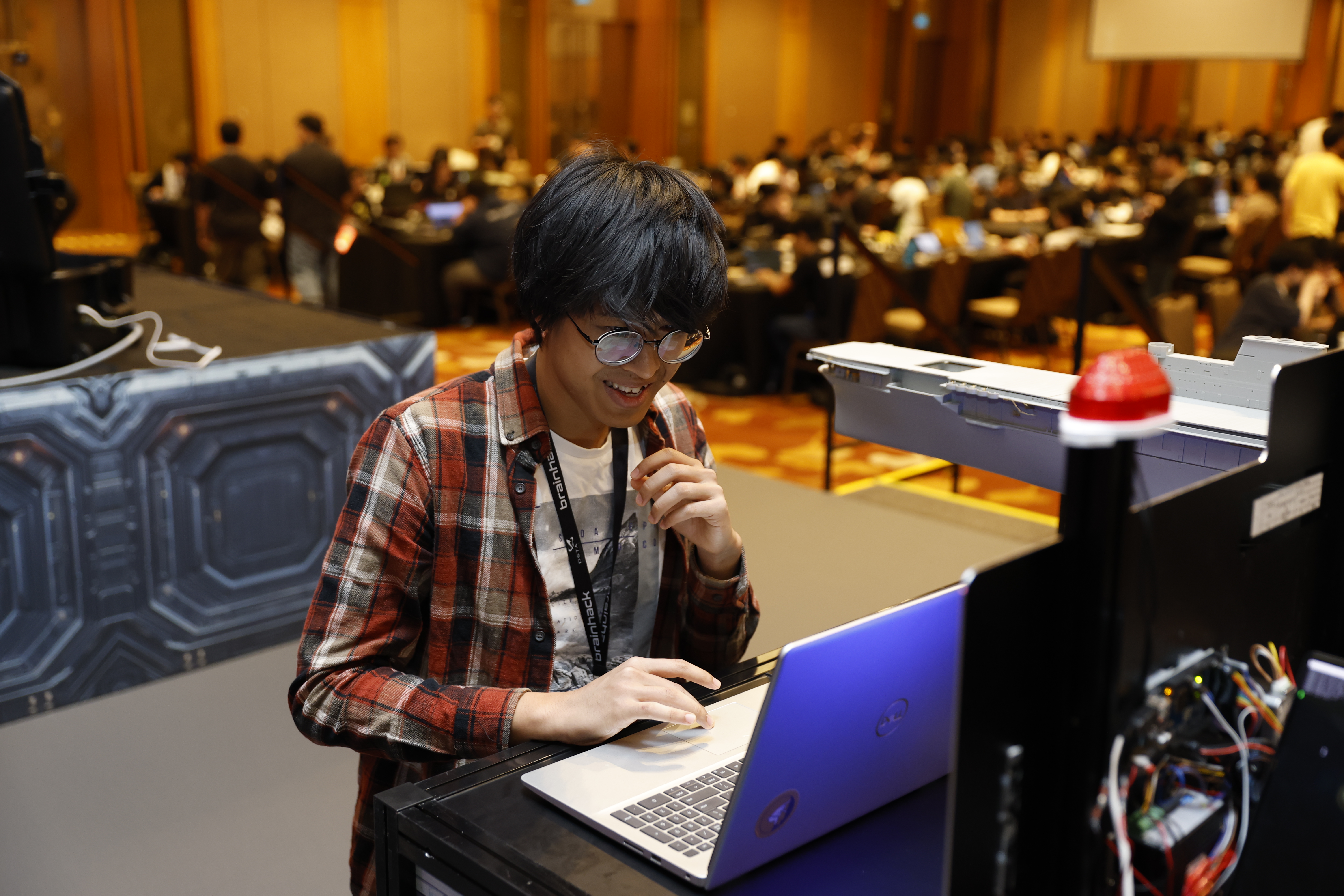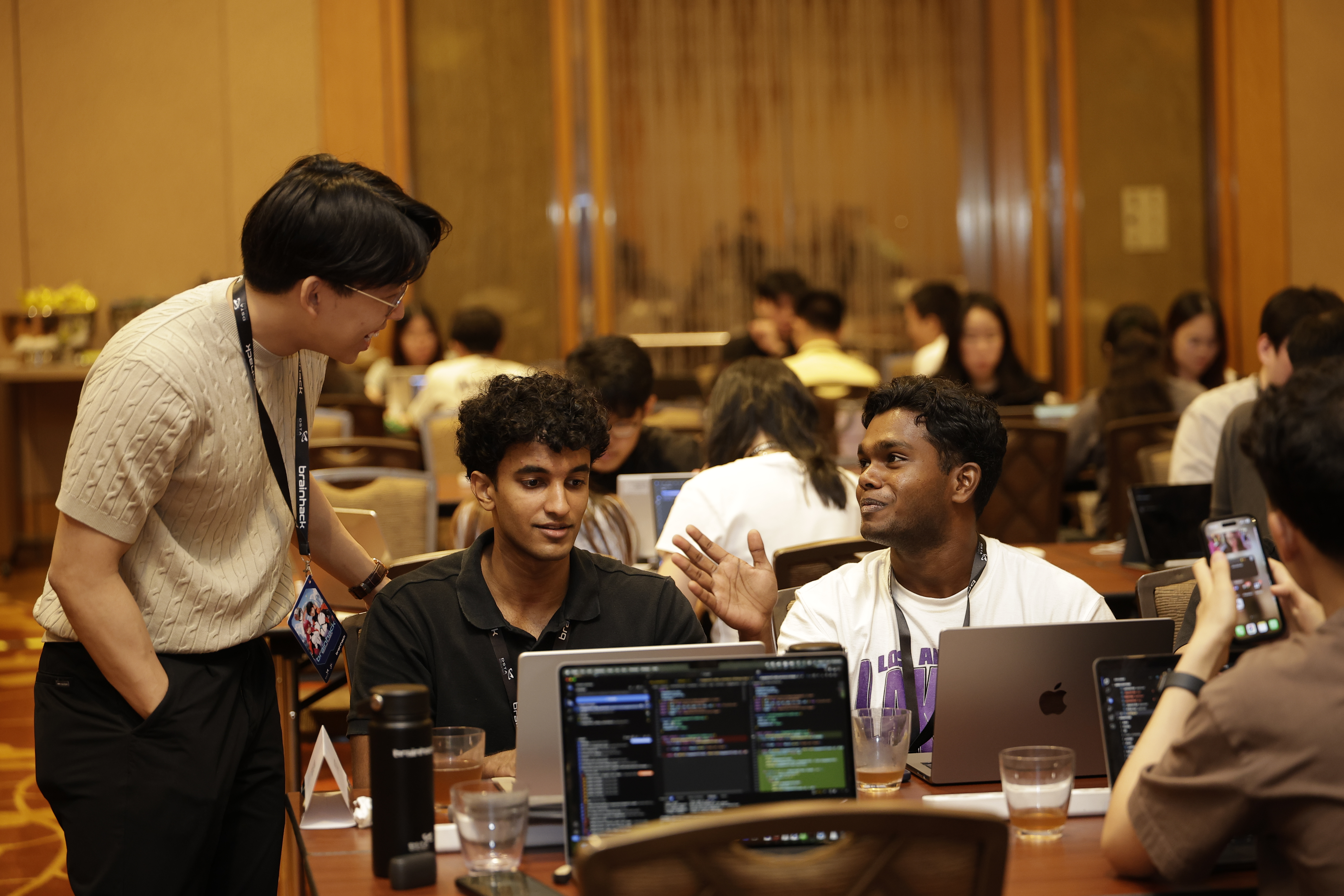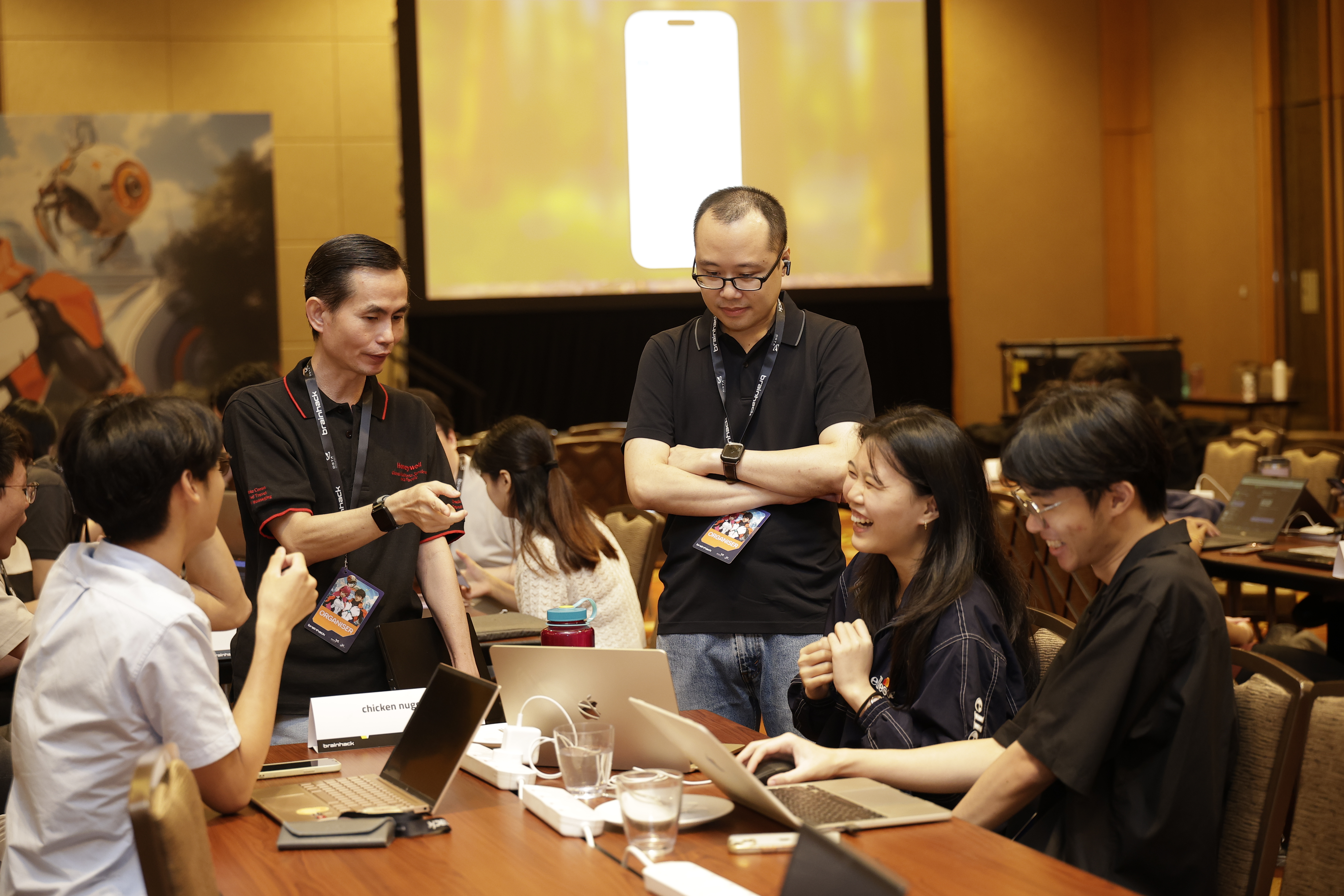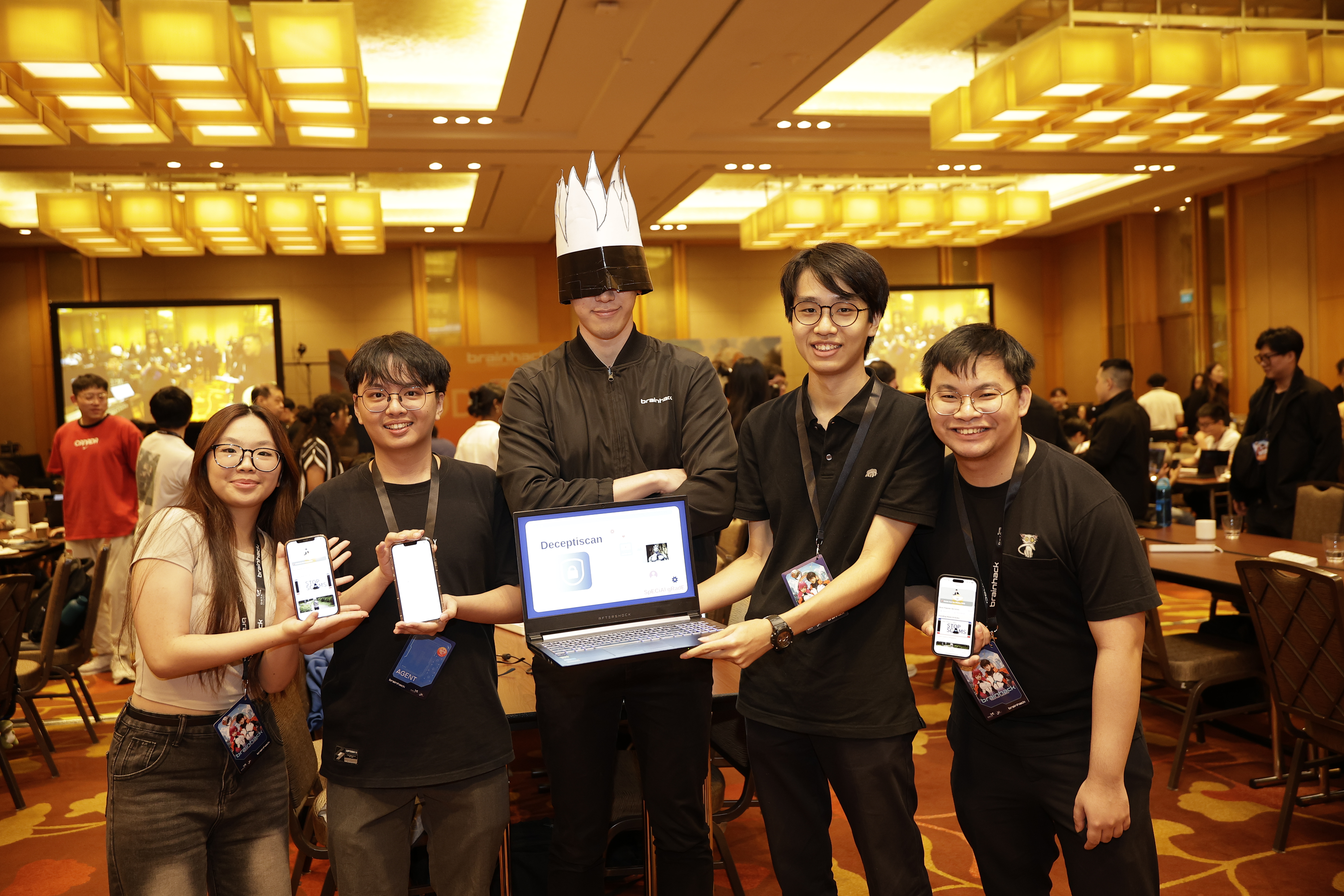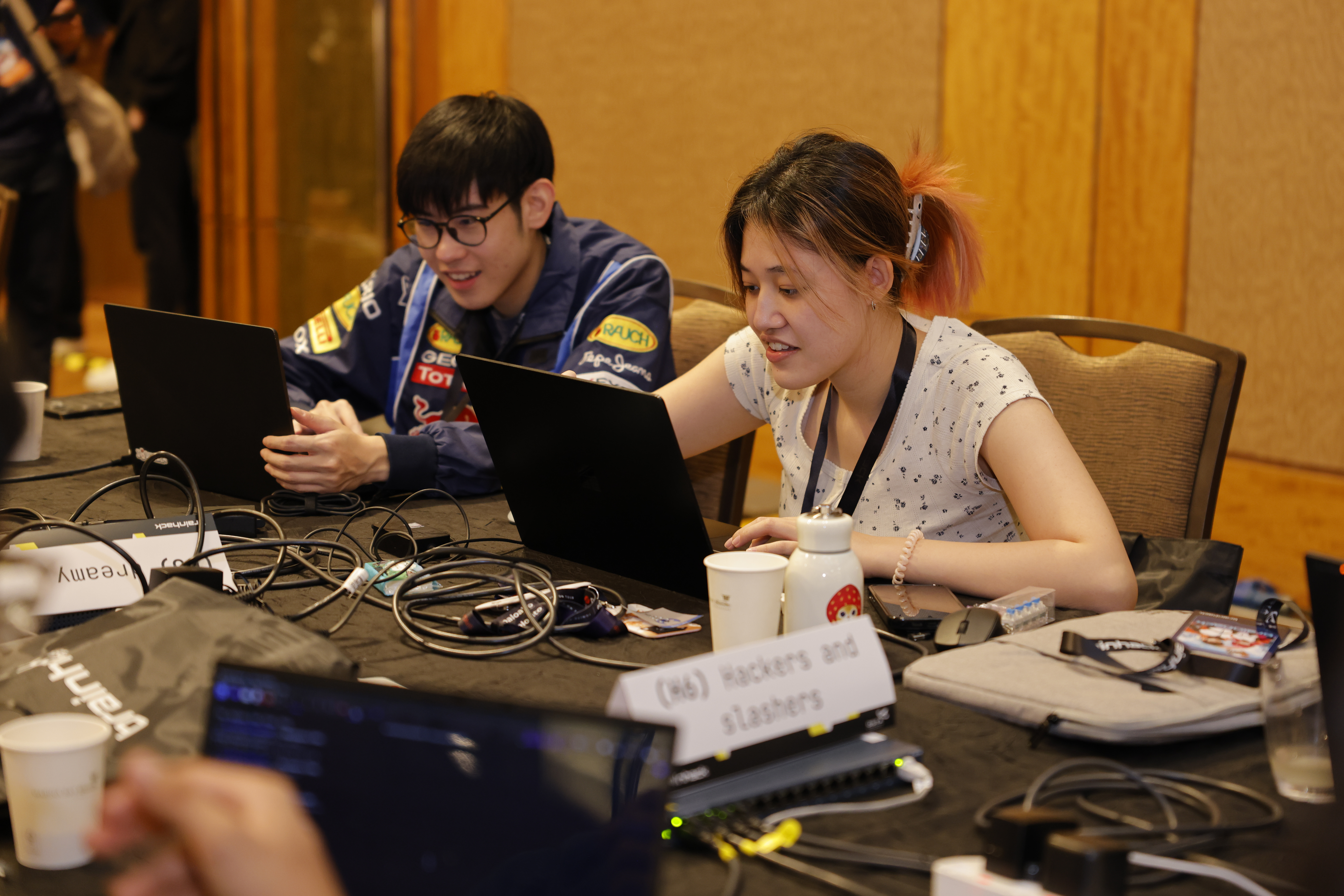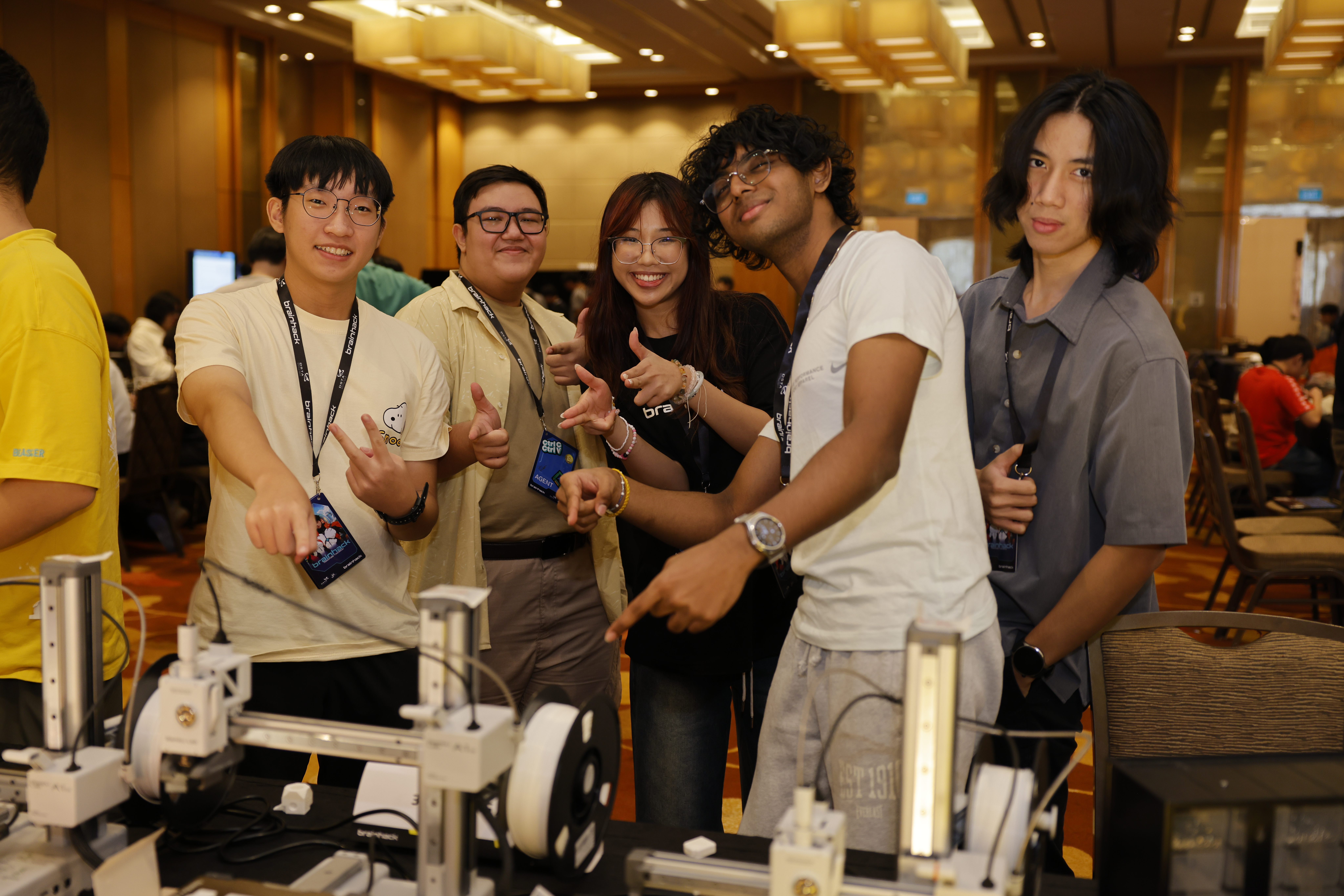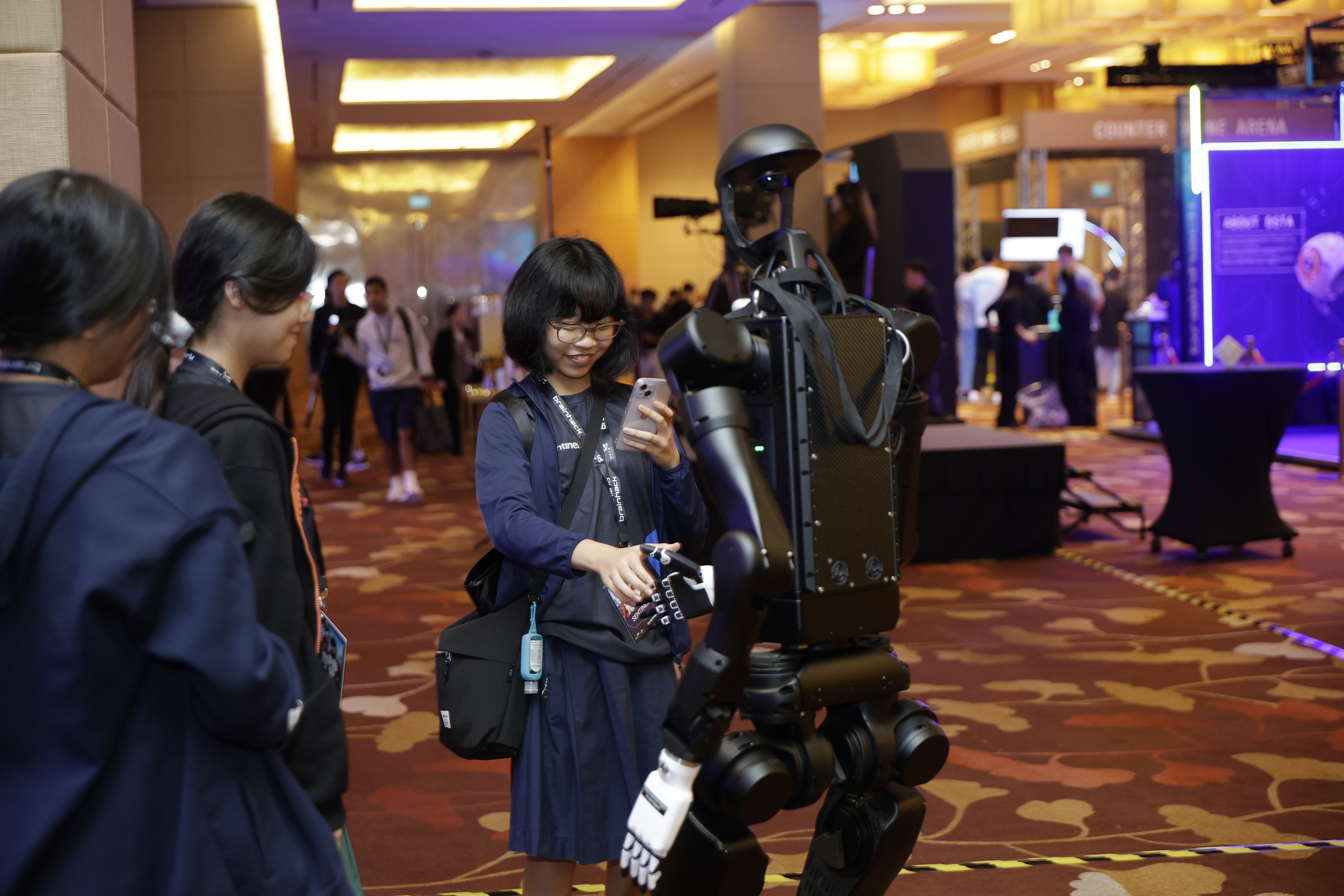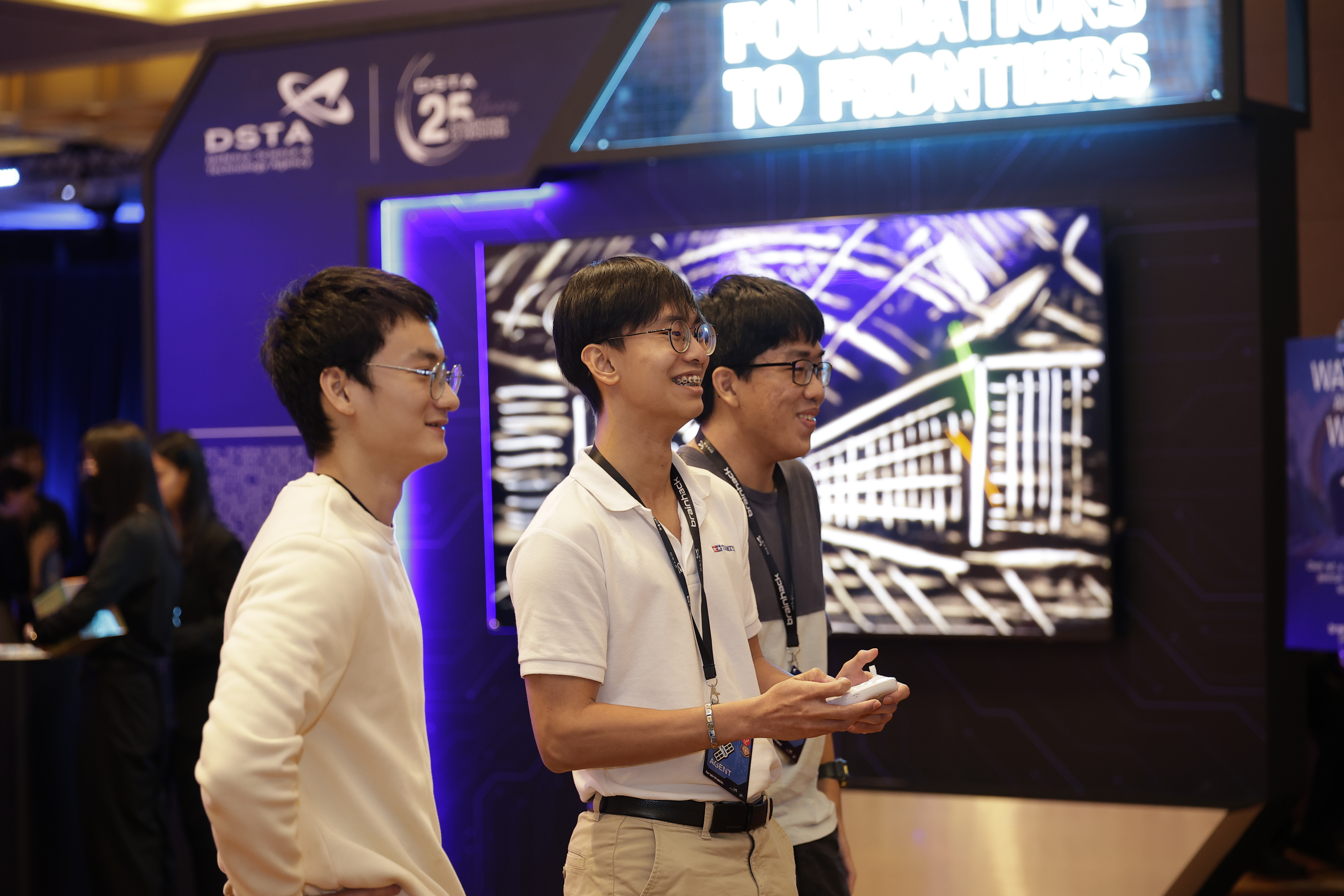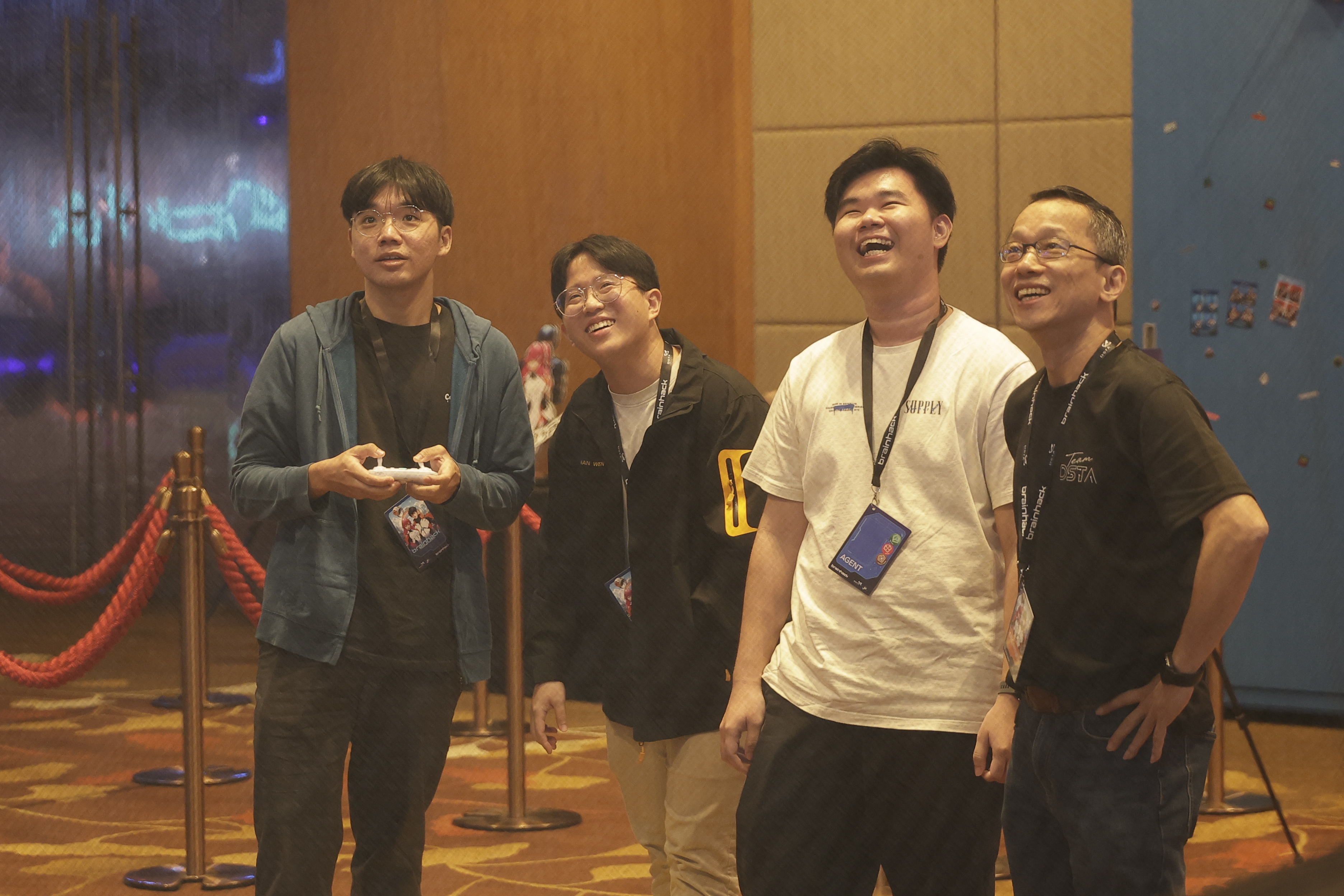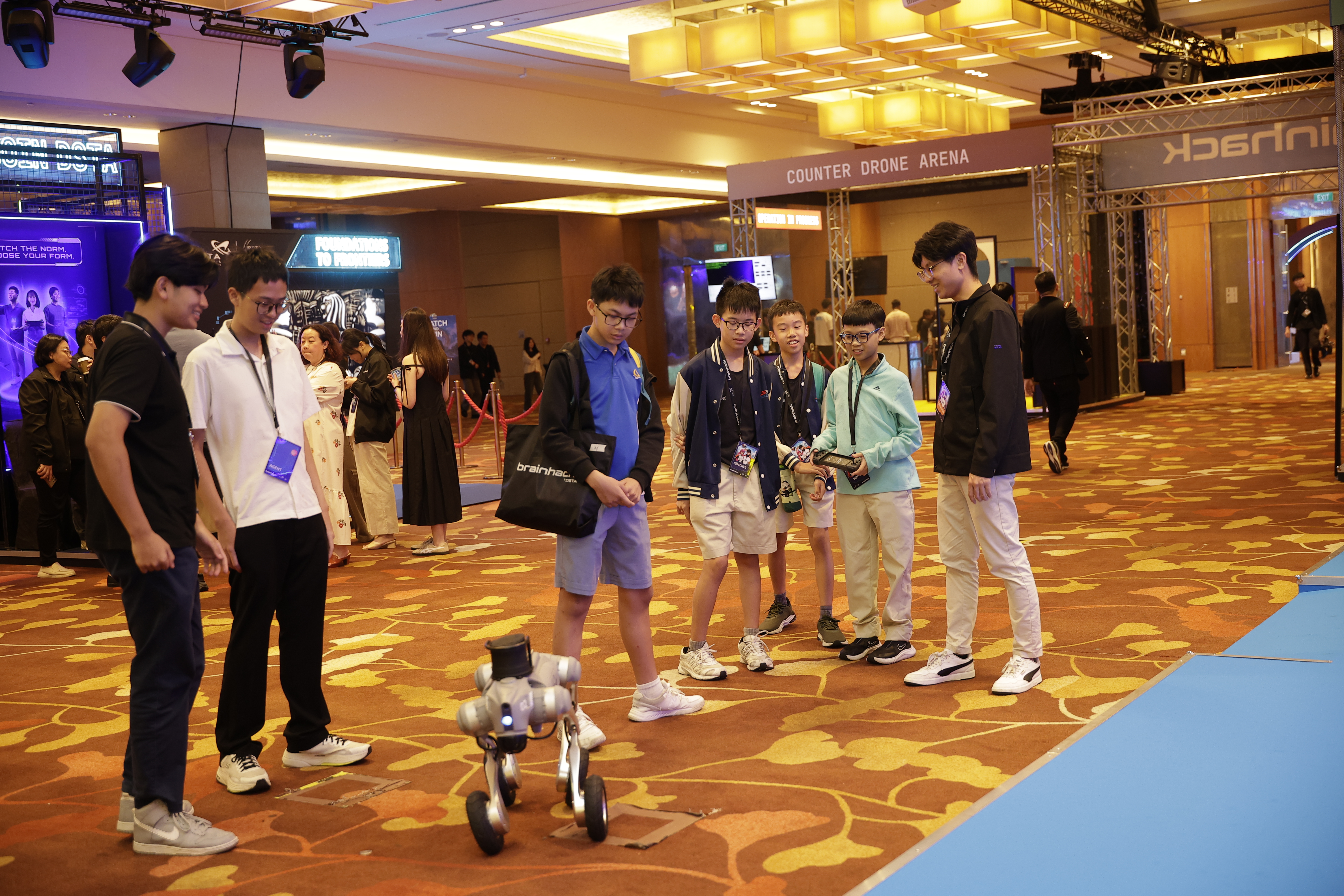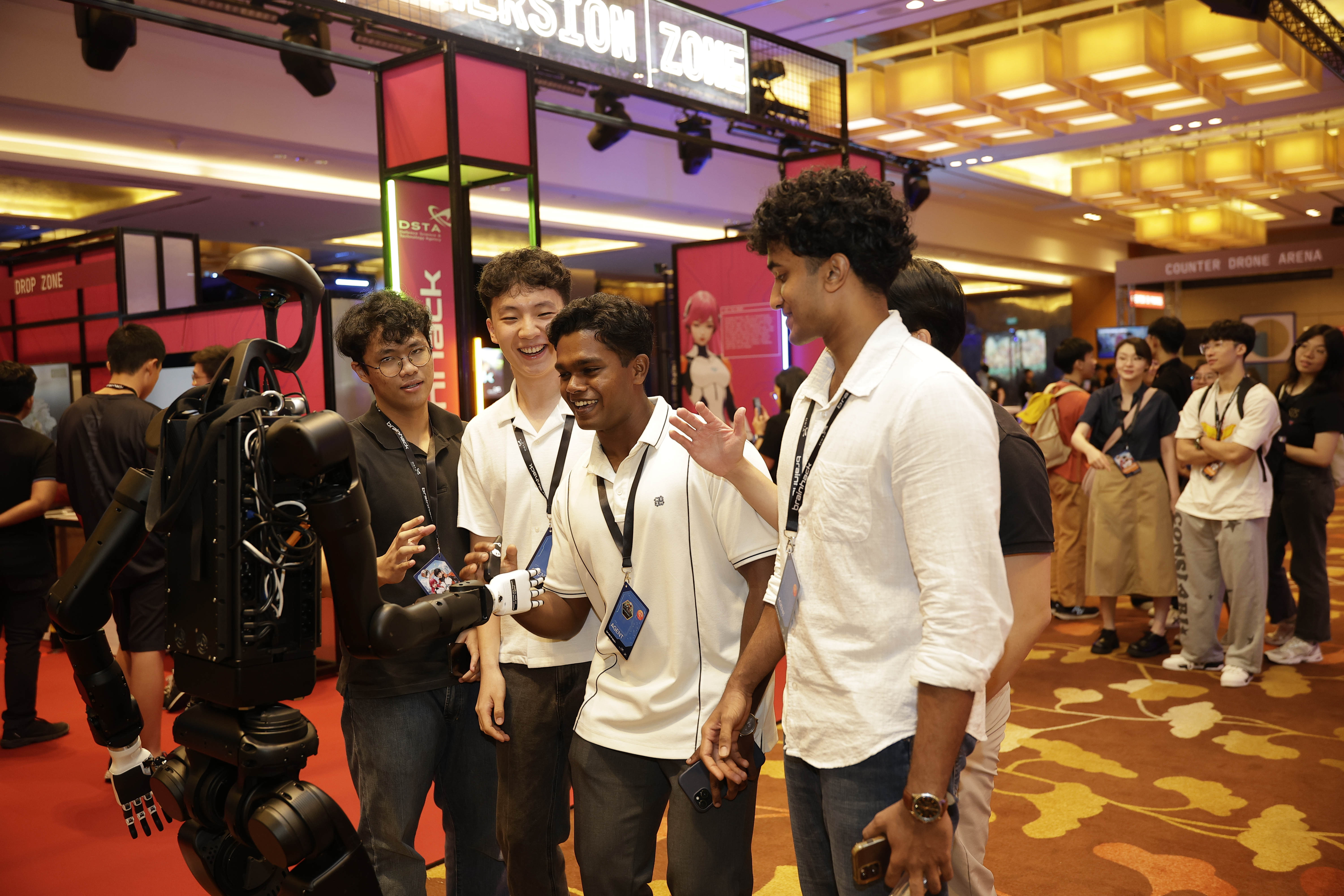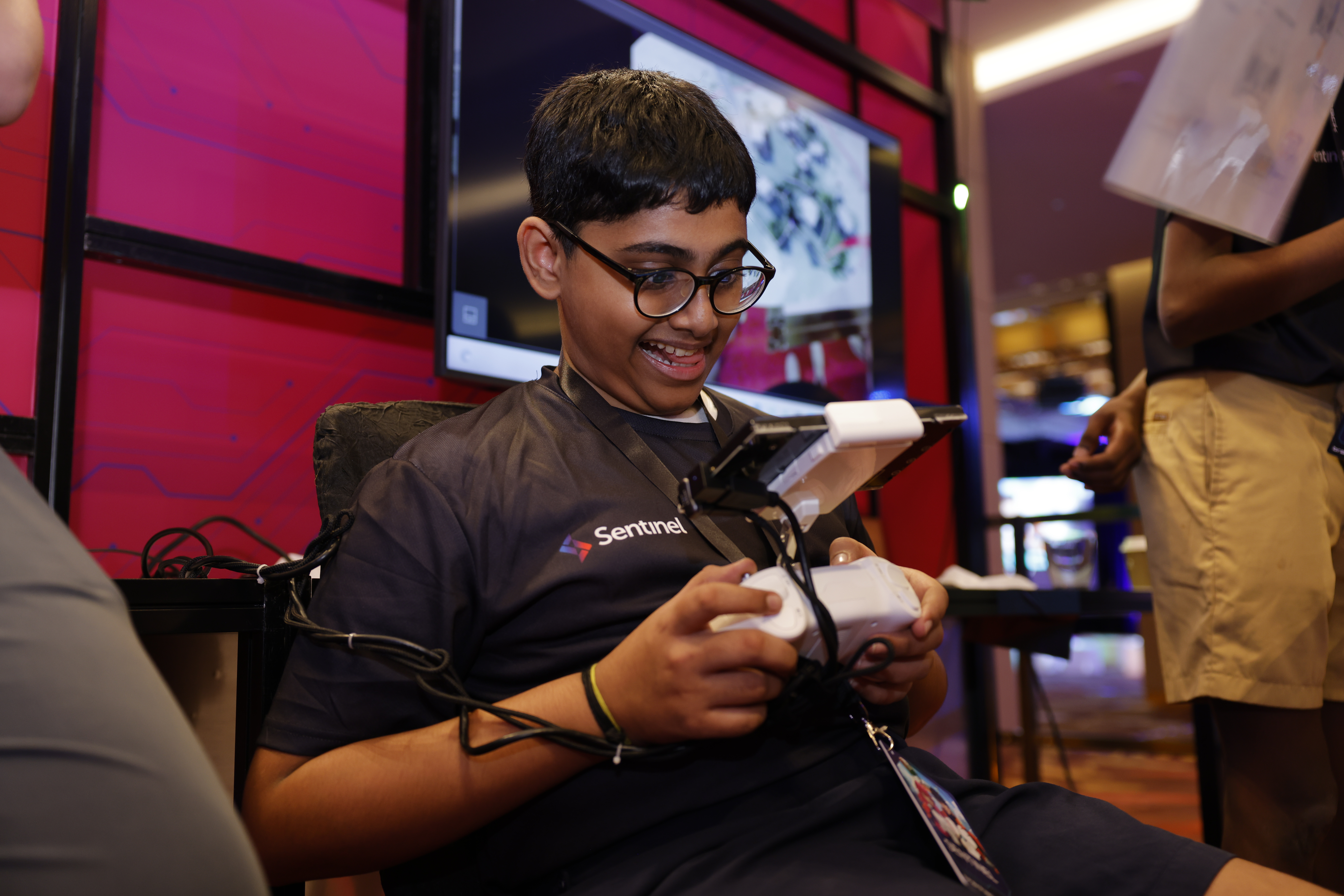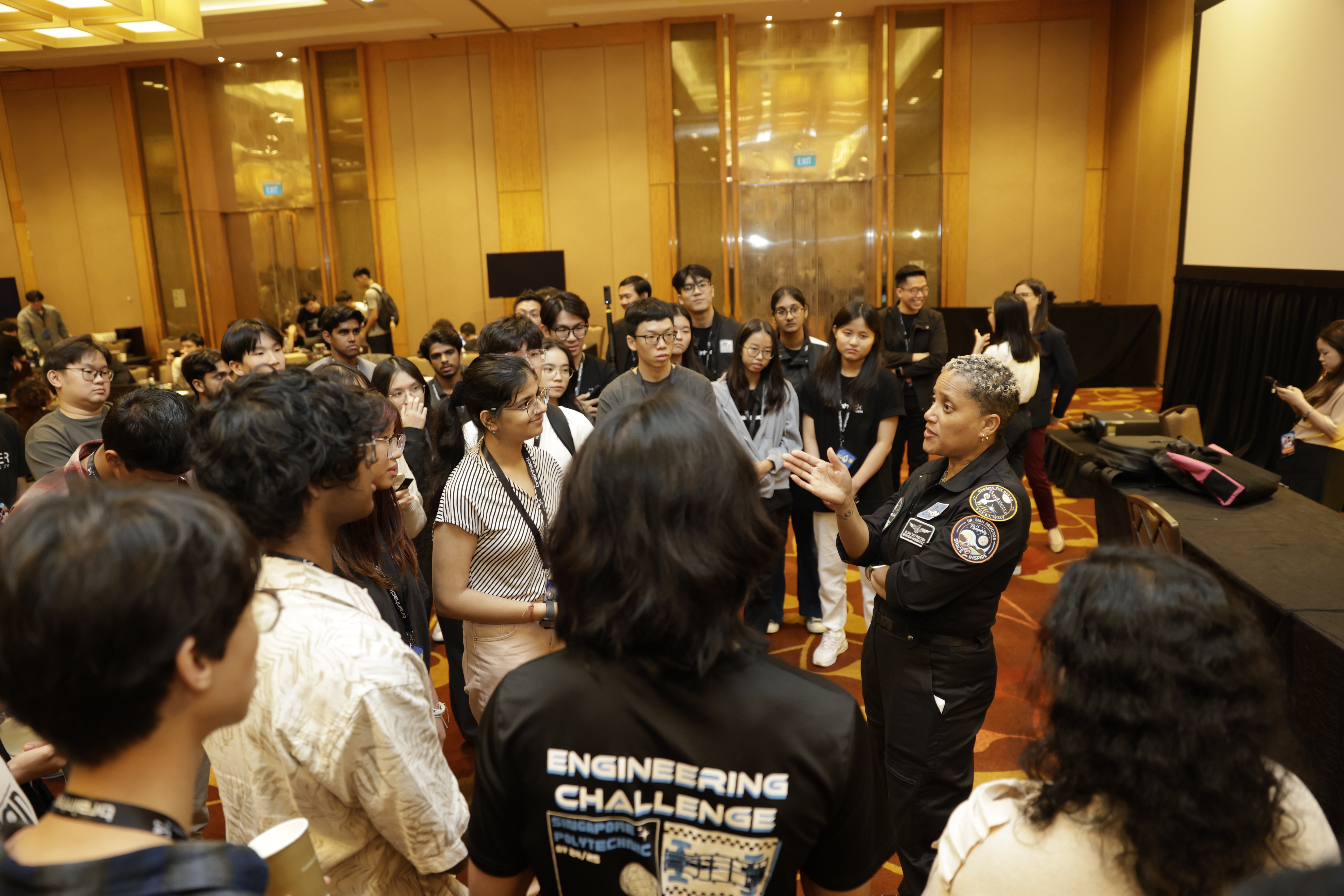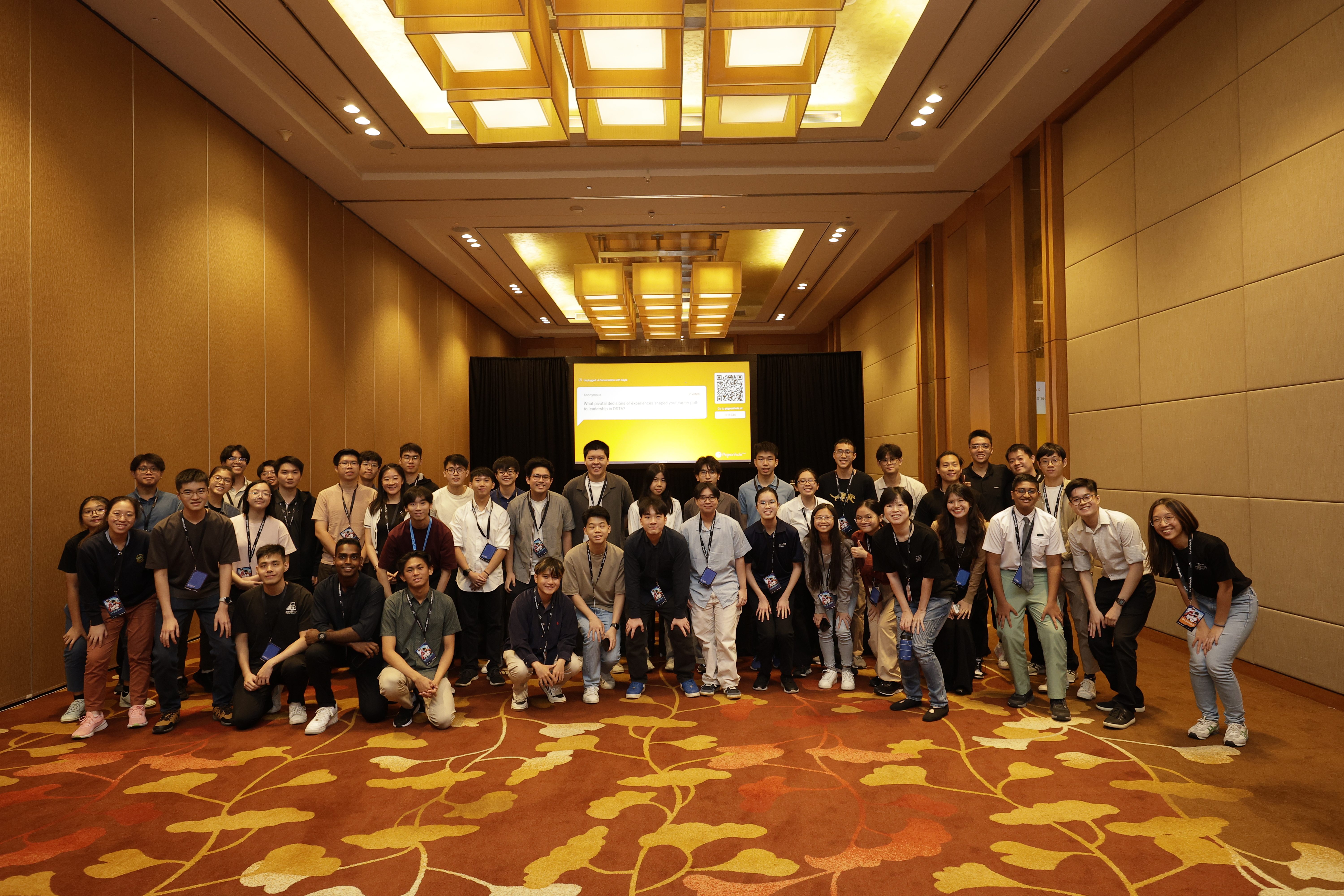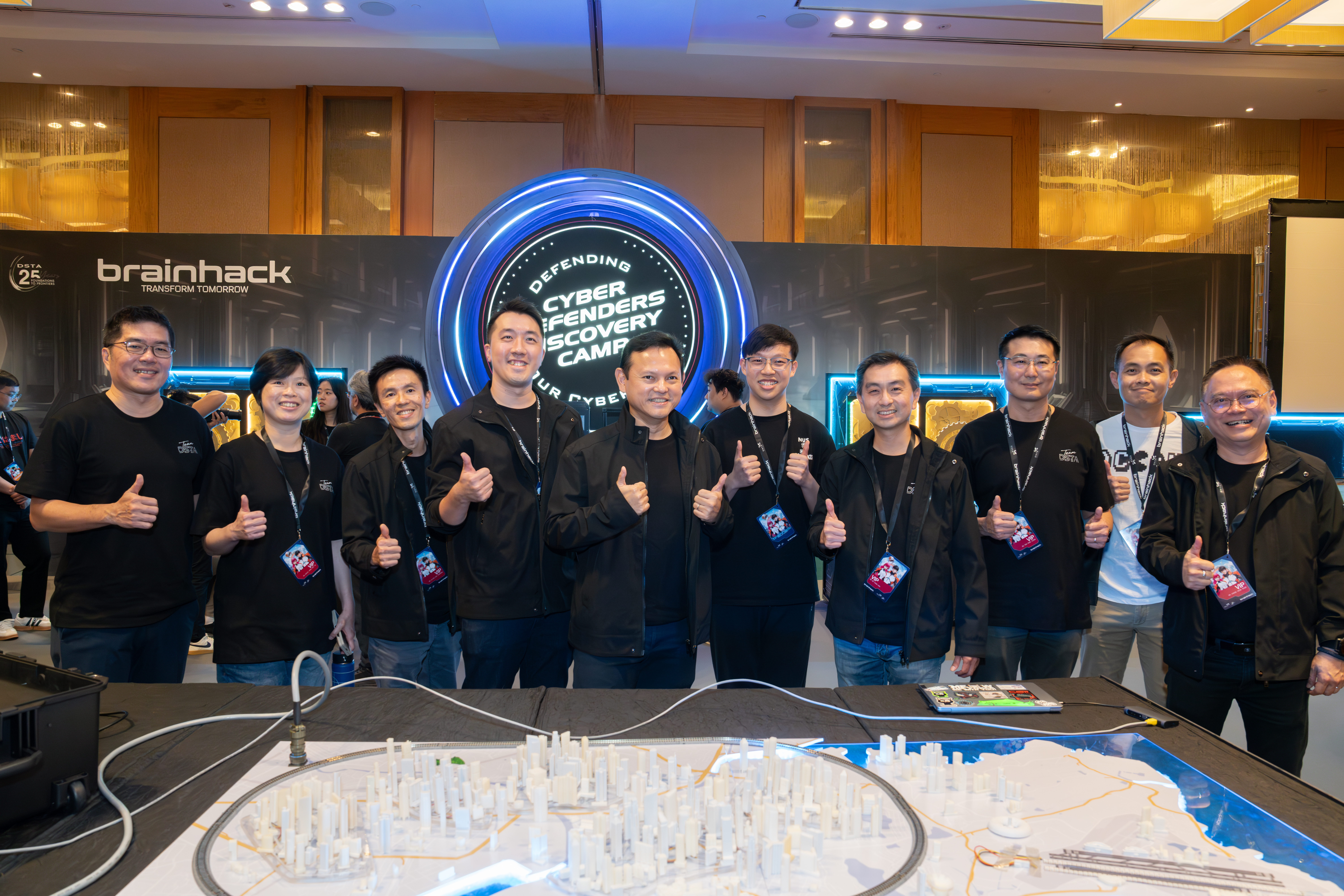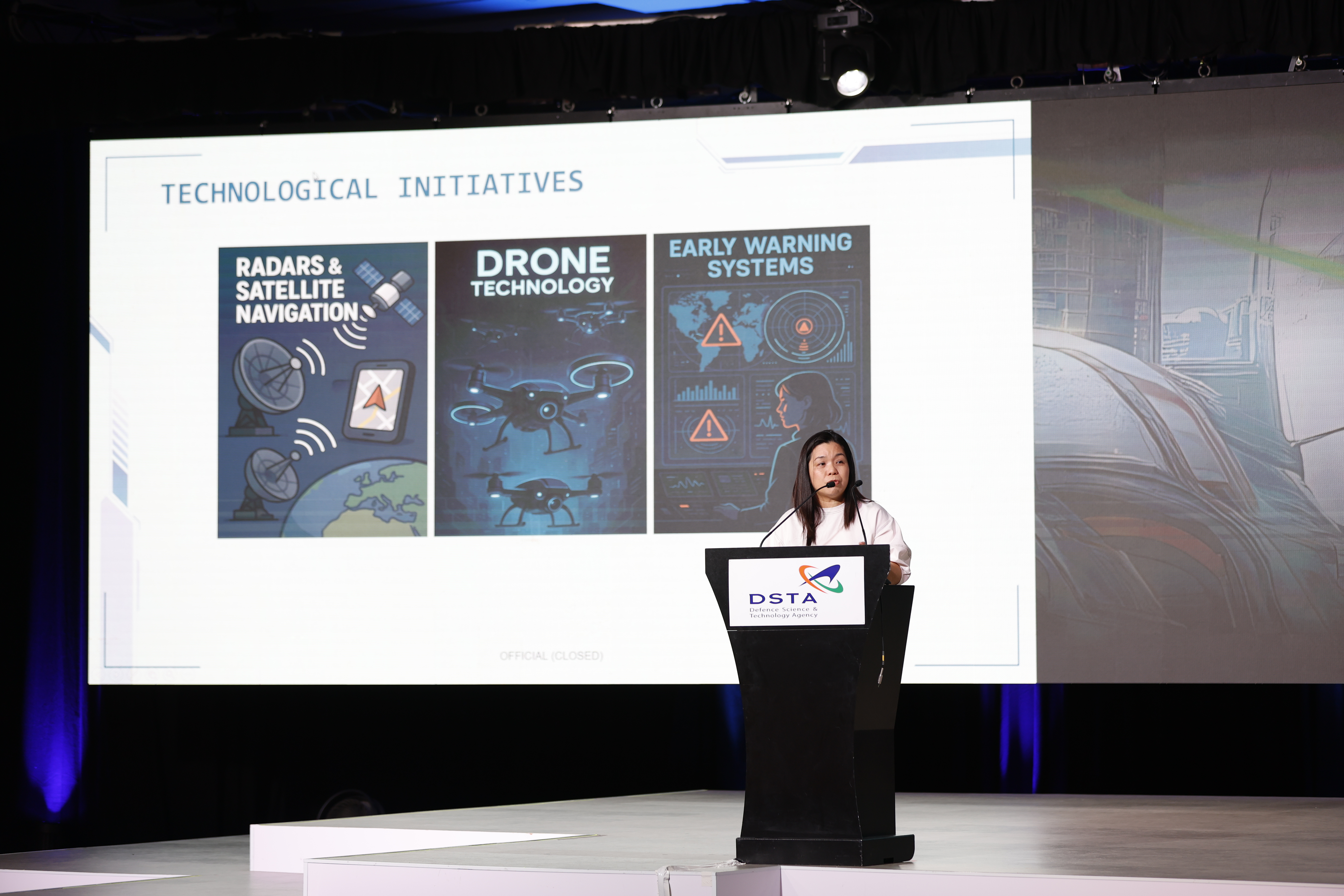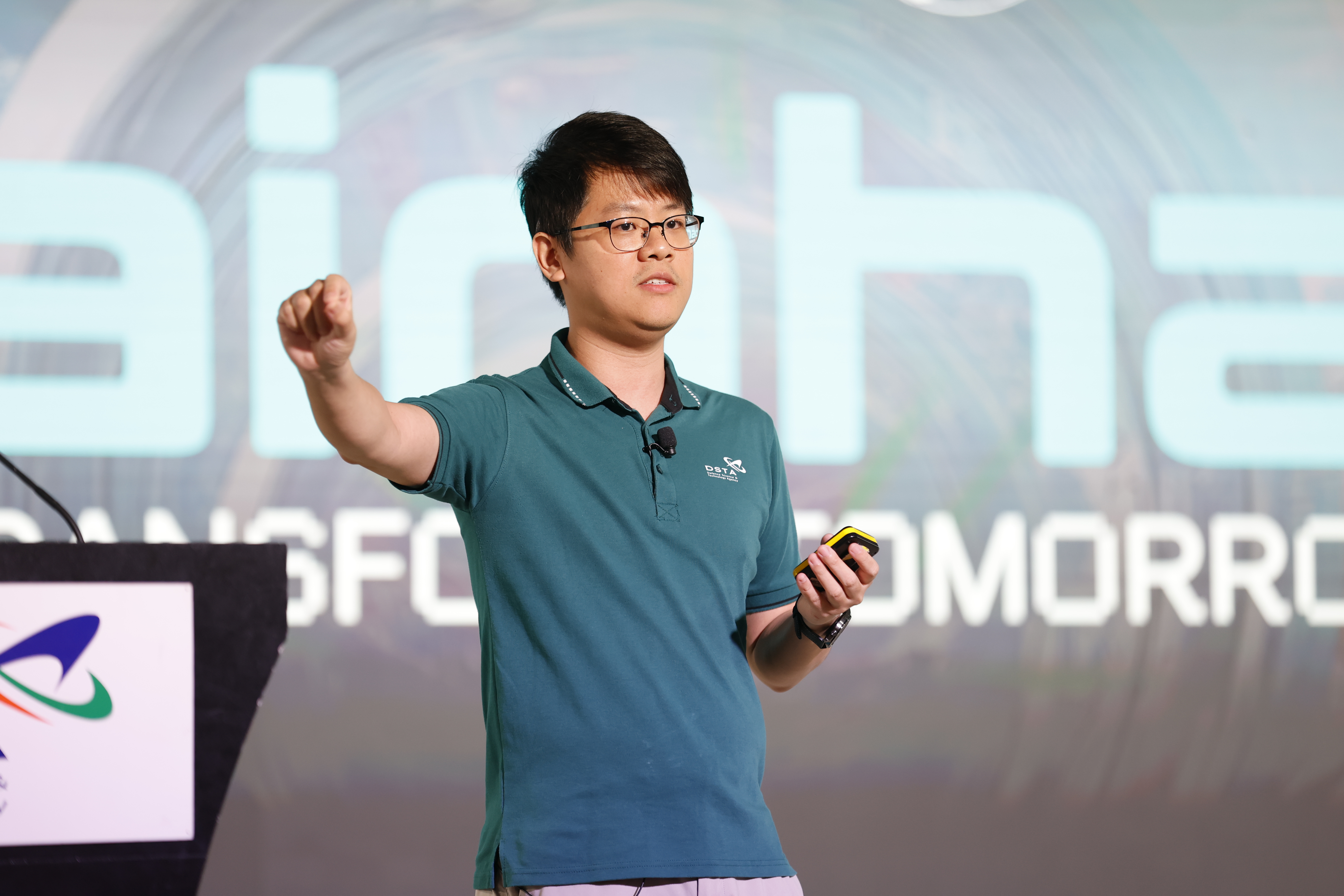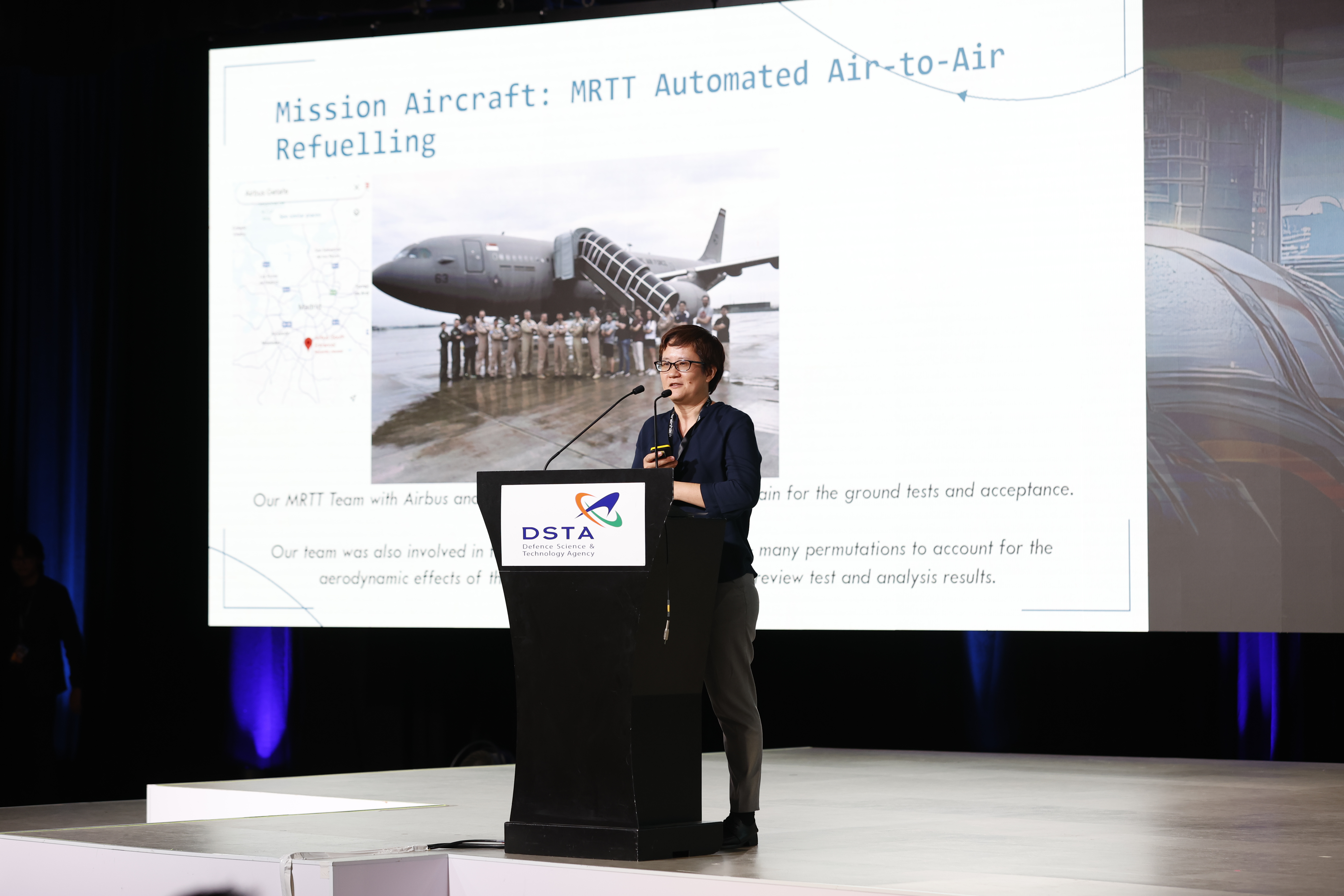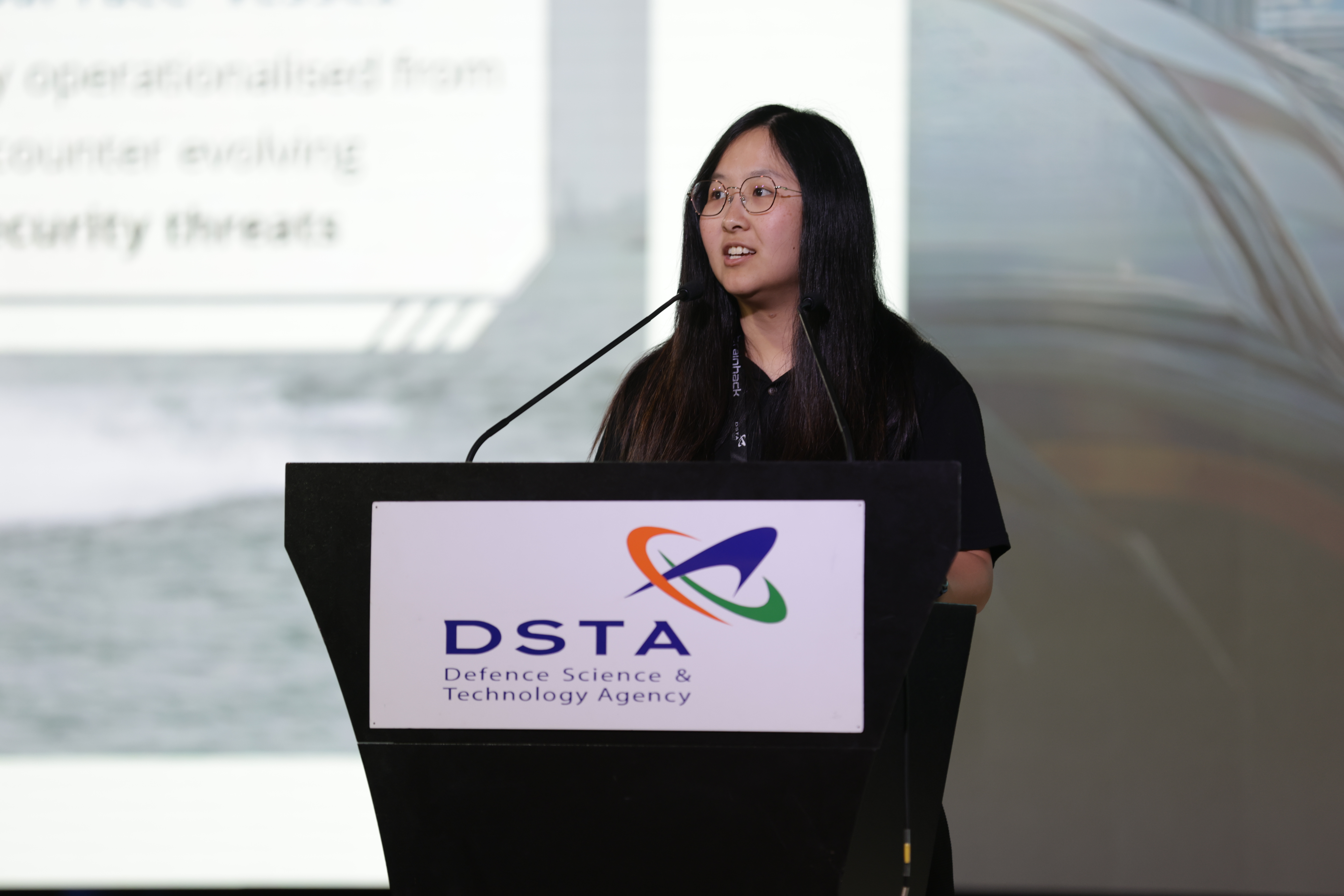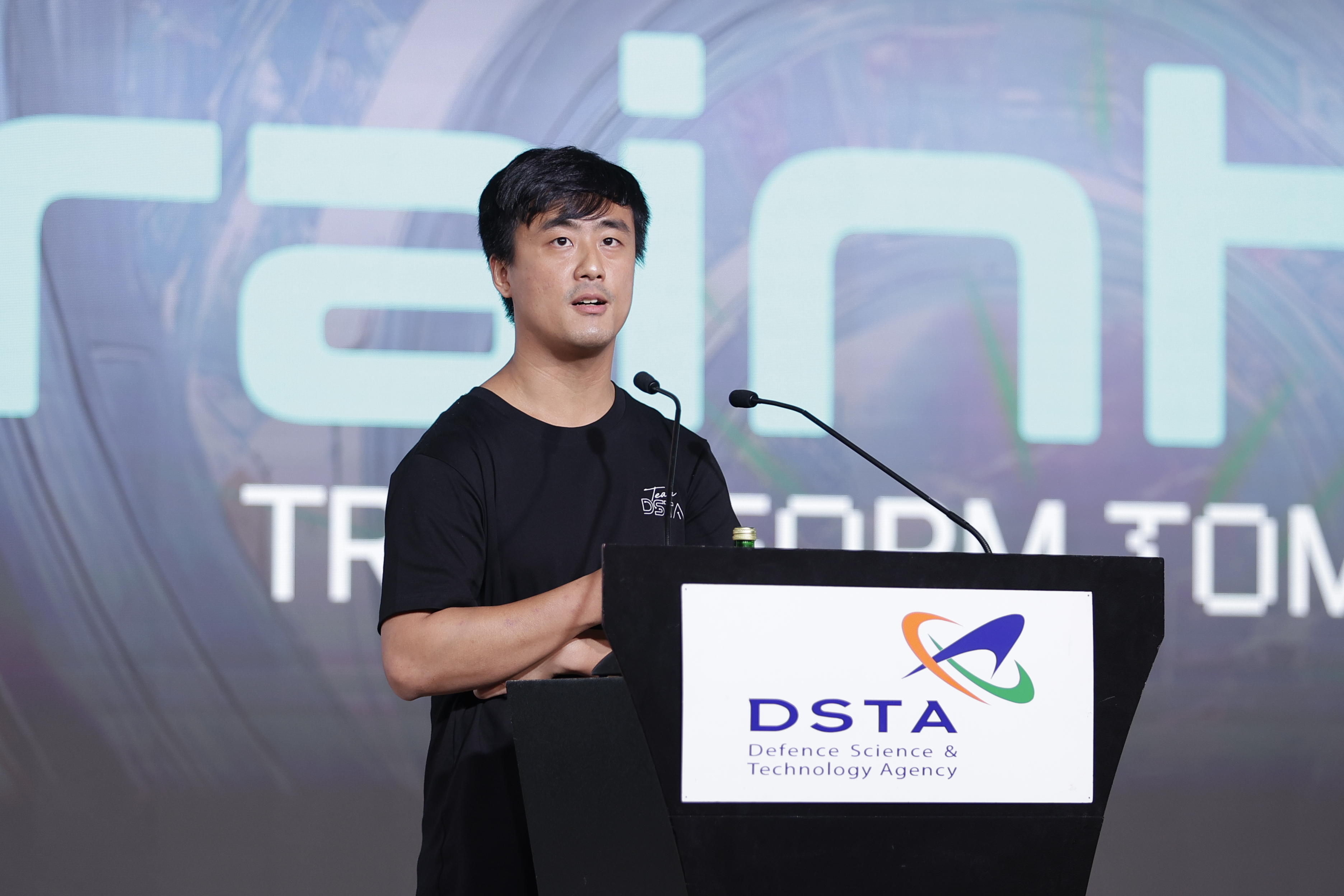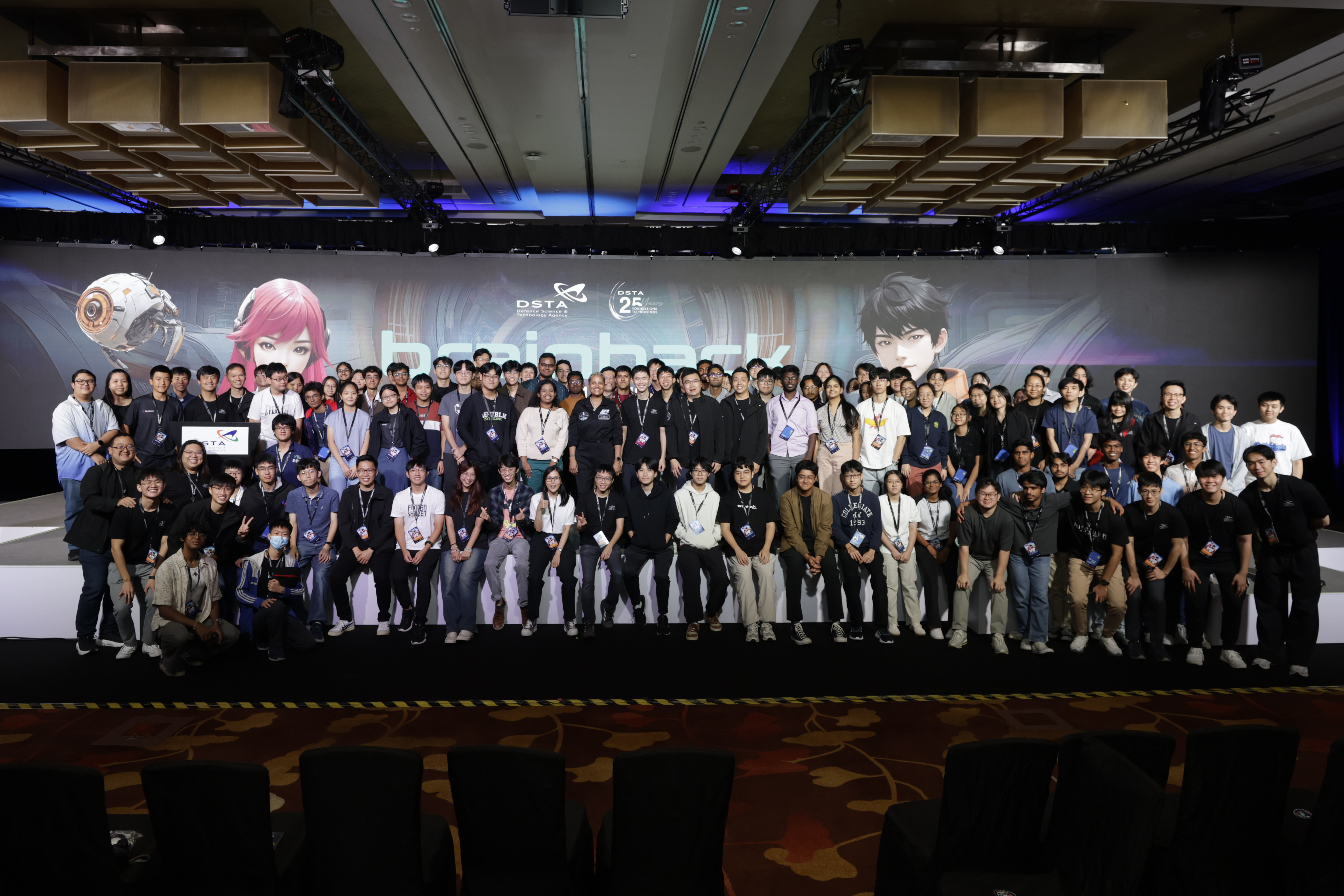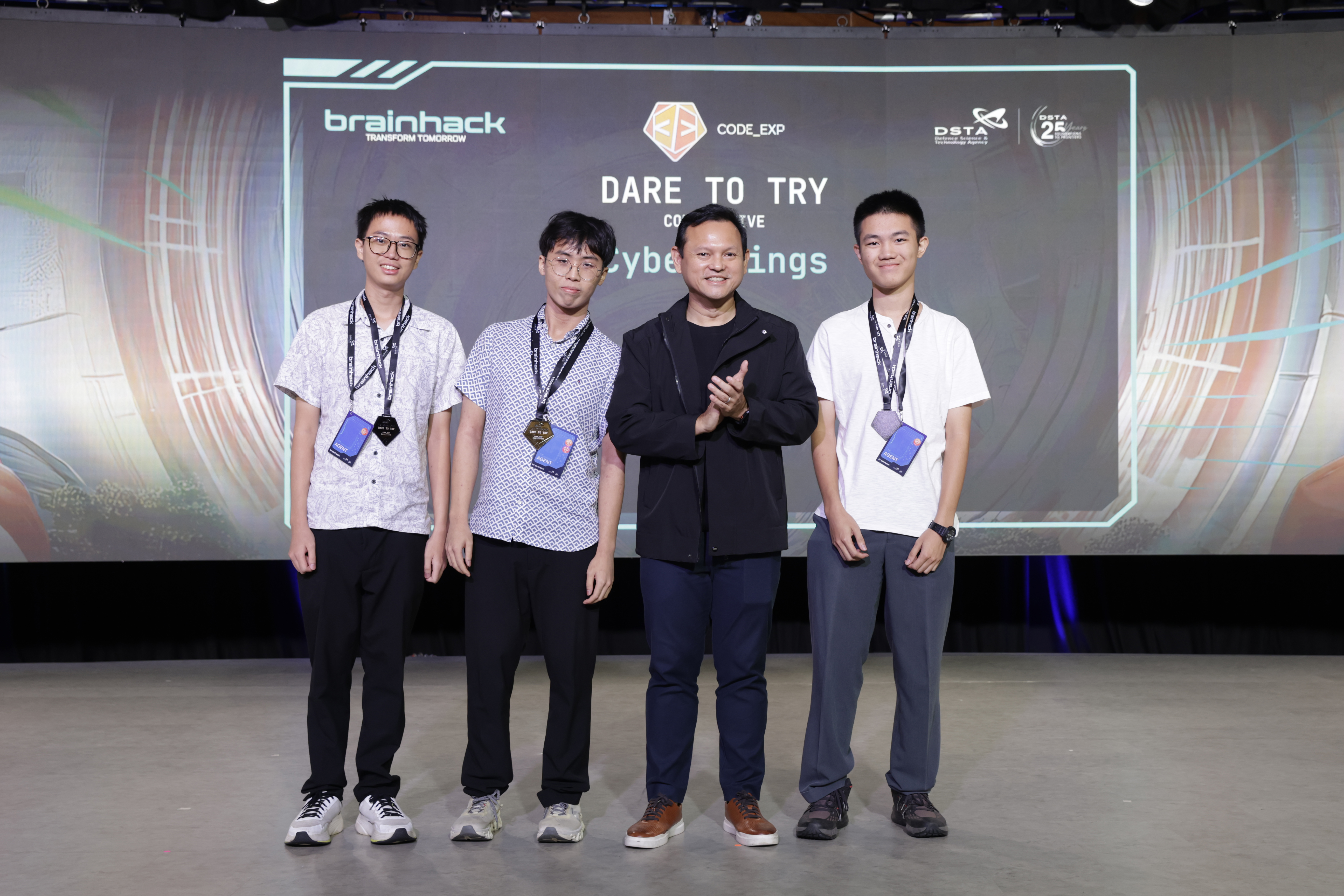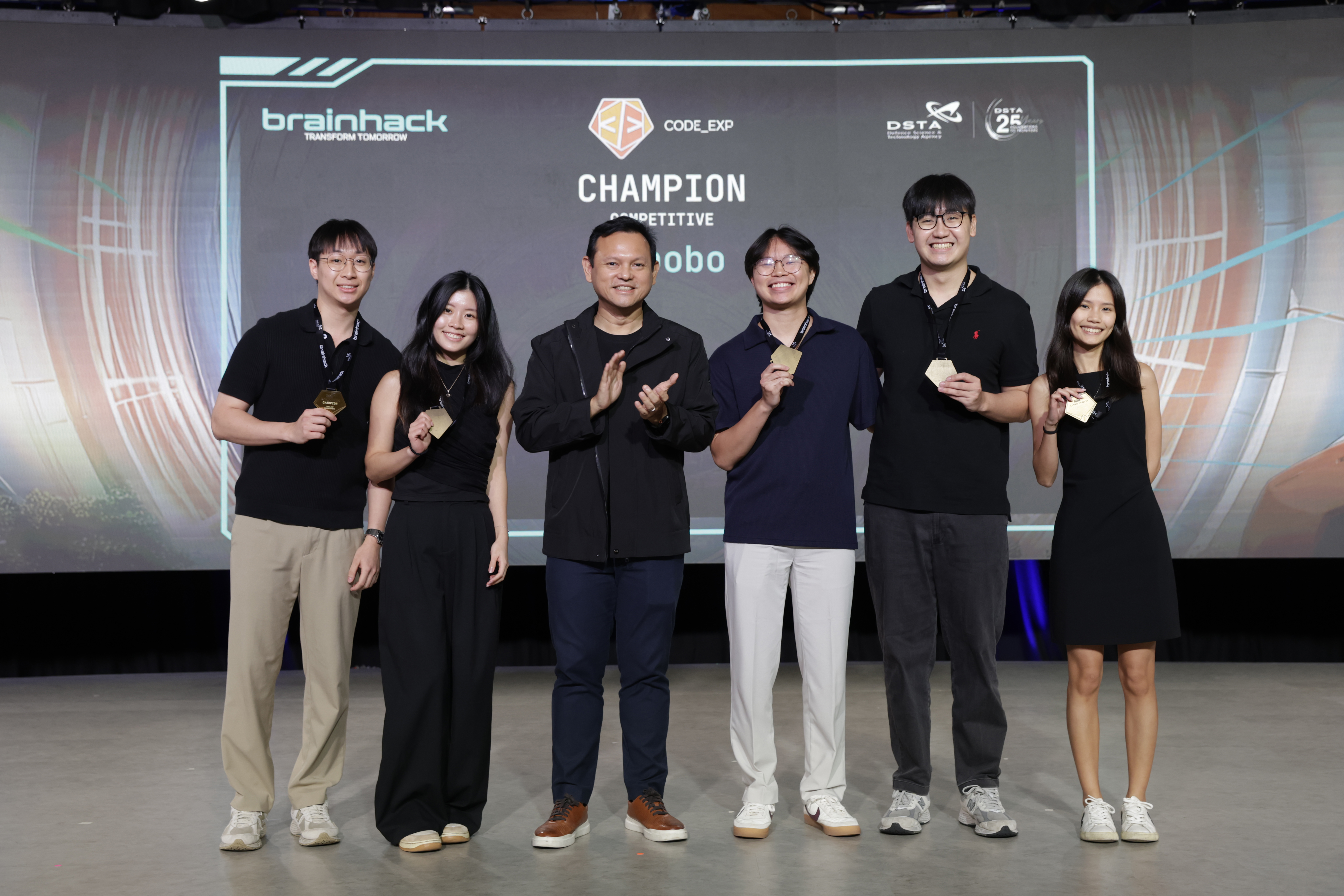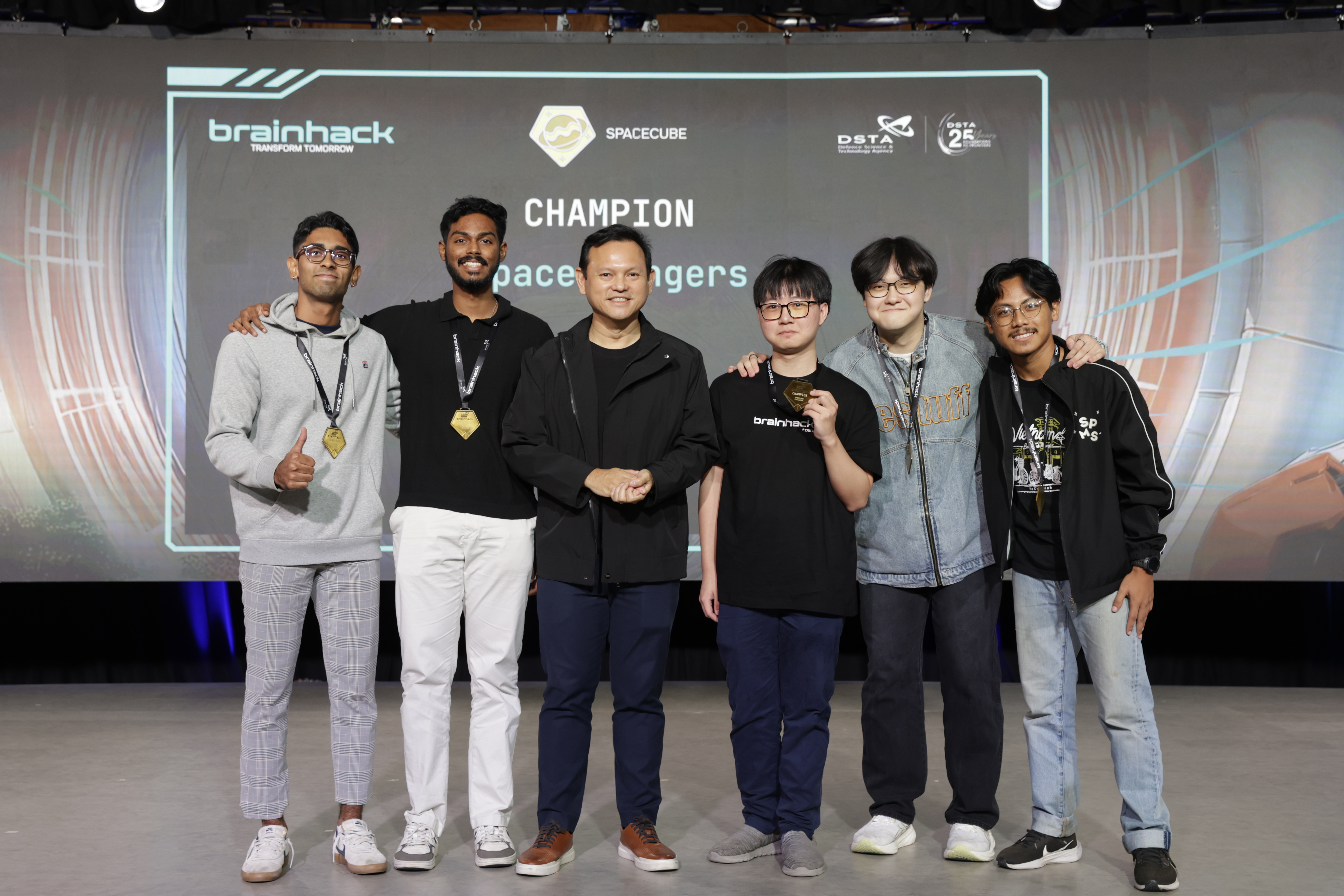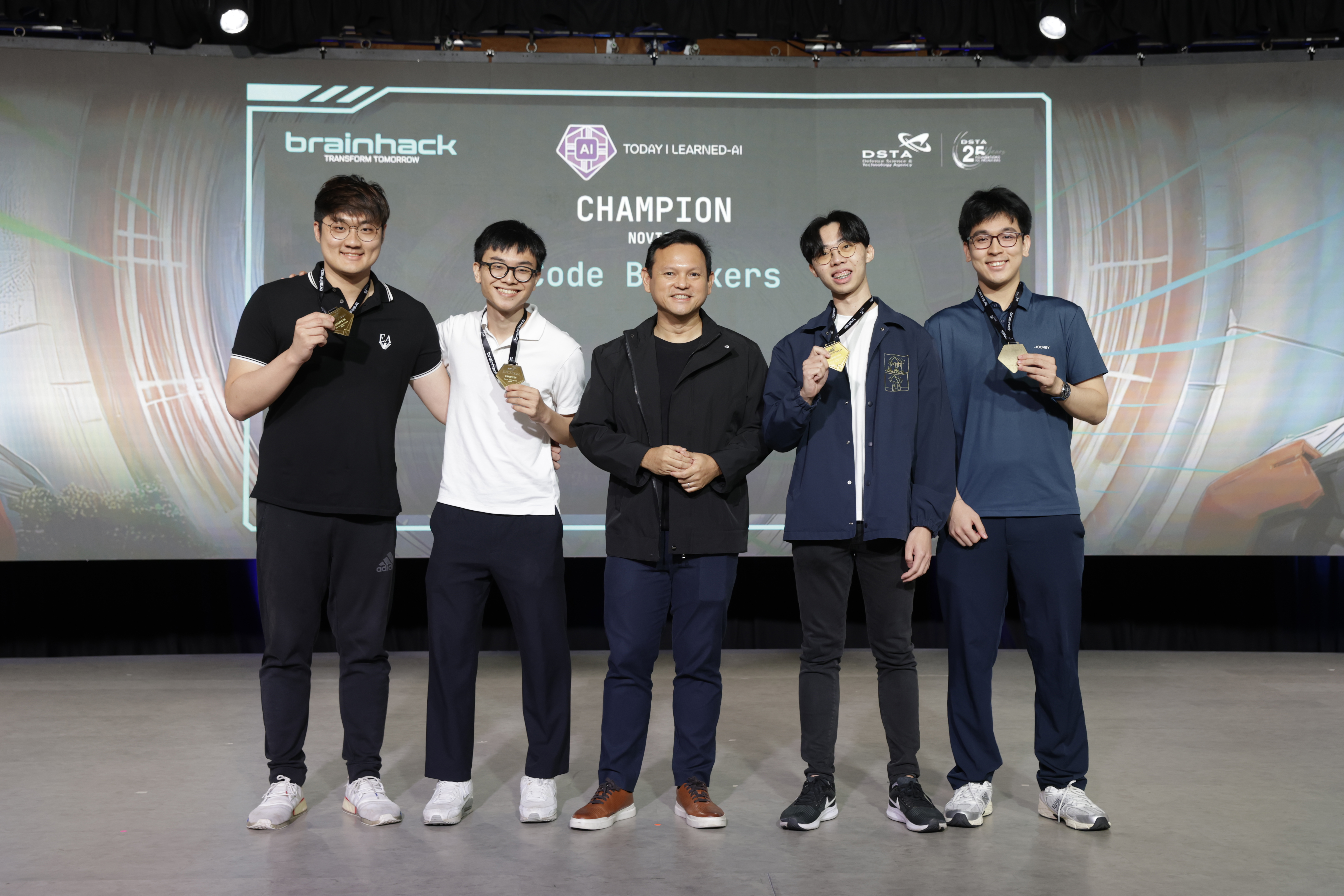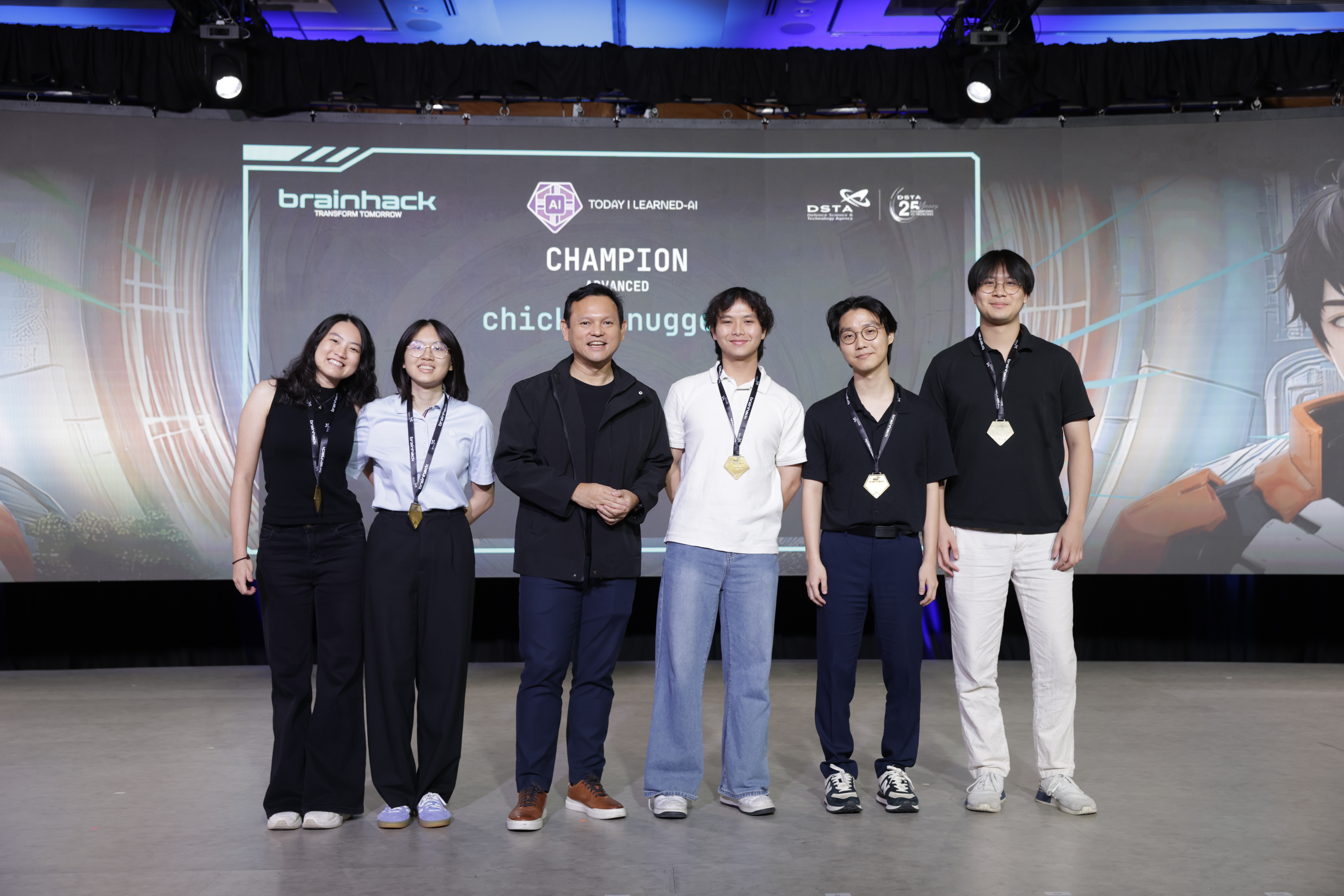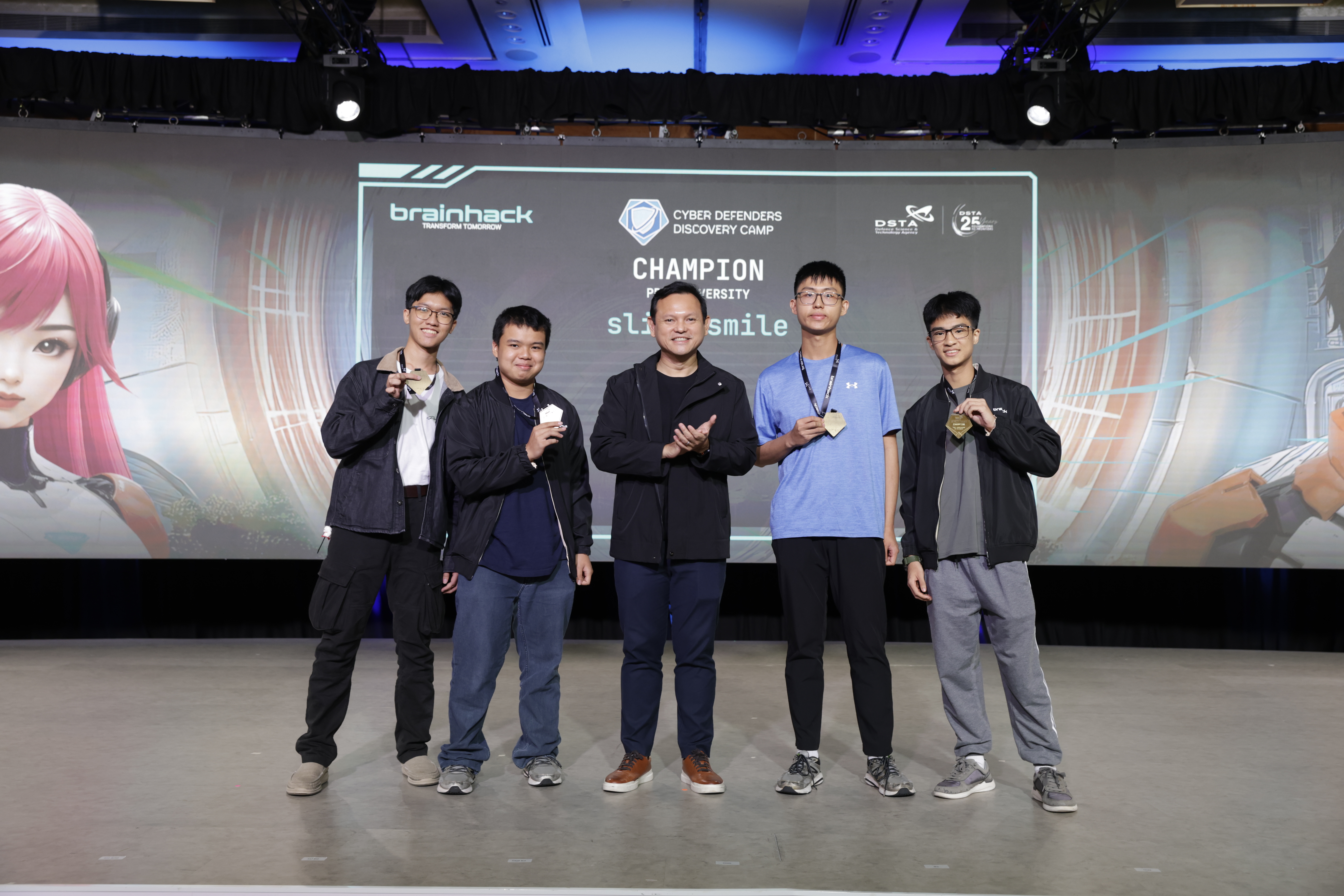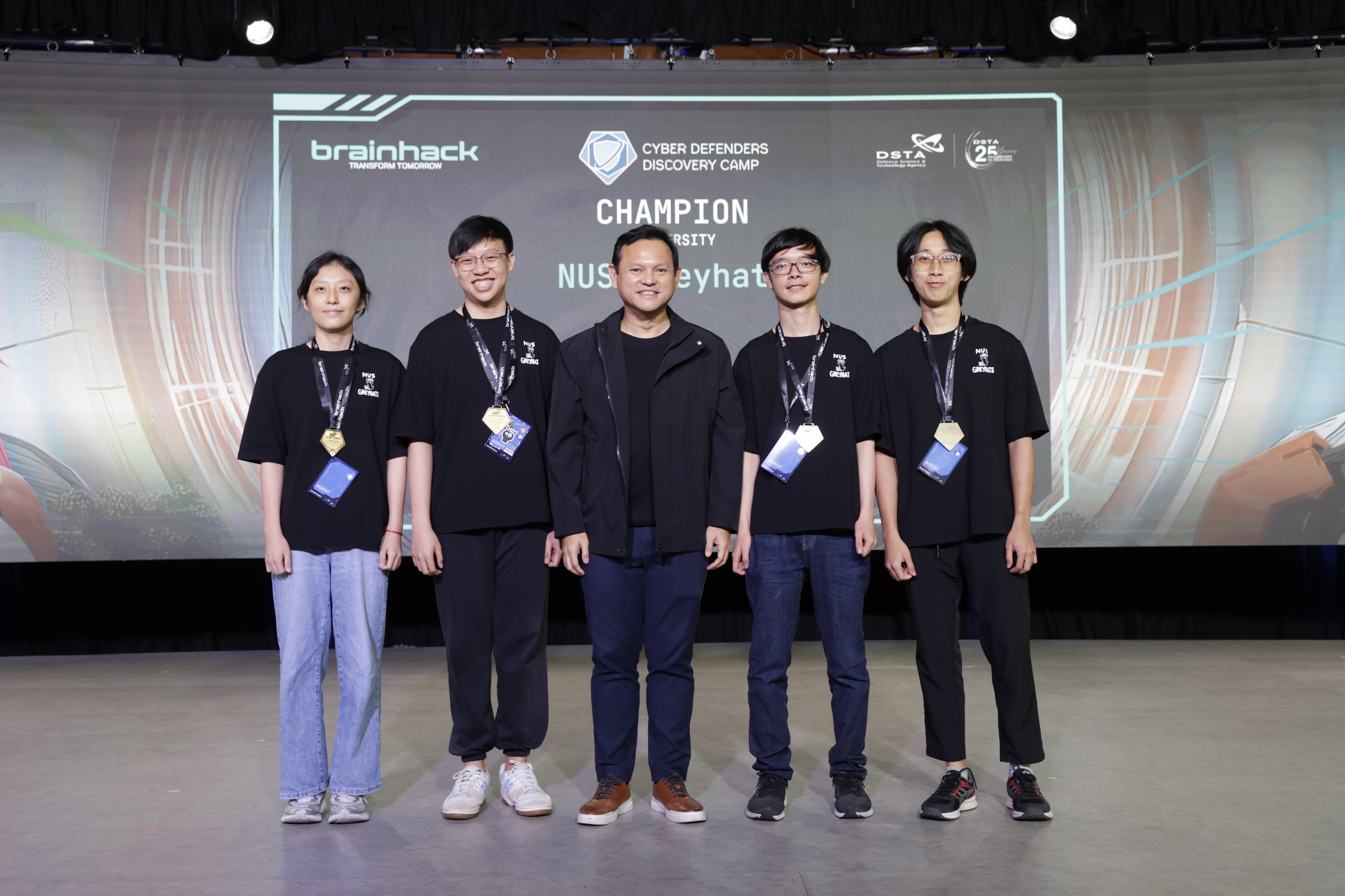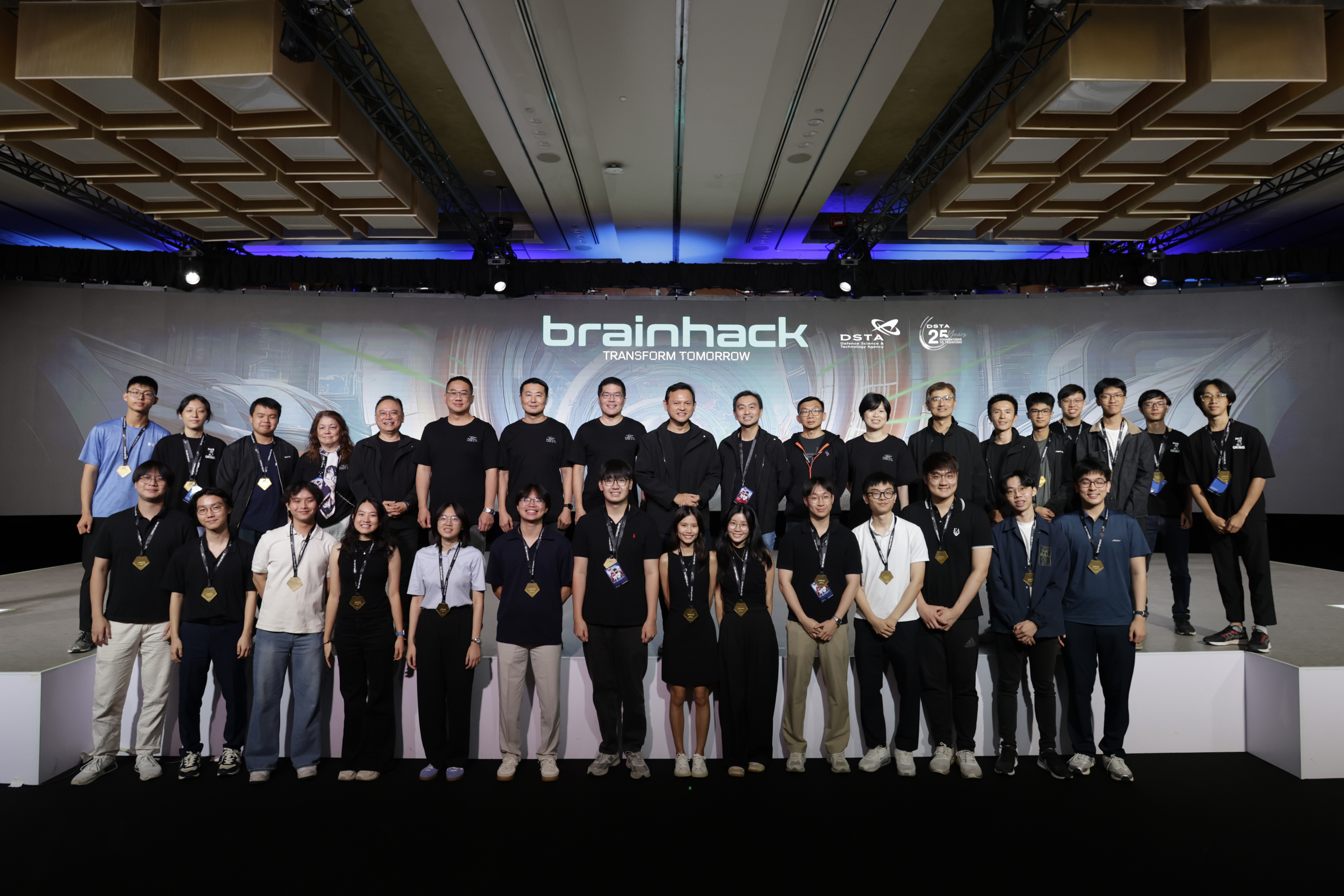11 Jun 2025
The seventh edition of DSTA’s annual learning festival, BrainHack, saw more than 4,300 students gather together, the largest turnout since its inception in 2019.
Themed “Transform Tomorrow”, the event offered students the opportunity to Compete, Learn and Experience various emerging technologies such as cybersecurity, artificial intelligence, space technology, software development, robotics, and many more. These activities reflect the vital work DSTA engineers do to safeguard Singapore — from developing AI that supports decision making, and building unmanned systems and robots, to strengthening cybersecurity across the defence ecosystem.
Recognising the importance of creating opportunities for youths to be exposed to defence technologies, Senior Minister of State for Defence Mr Zaqy Mohamad, who was the Guest-of-Honour at the event finale, said, “BrainHack’s growth over the years is a reflection of the growing interest among our youth in emerging technologies such as cybersecurity, artificial intelligence, space systems, and robotics… For a small nation like Singapore, these global developments are instructive. We think it is quite obvious what we need to do. We must be vigilant, agile, and forward-thinking. We must similarly invest in developing talent in defence technology. We need bold thinkers and skilled engineers who can harness emerging technologies for national defence.”
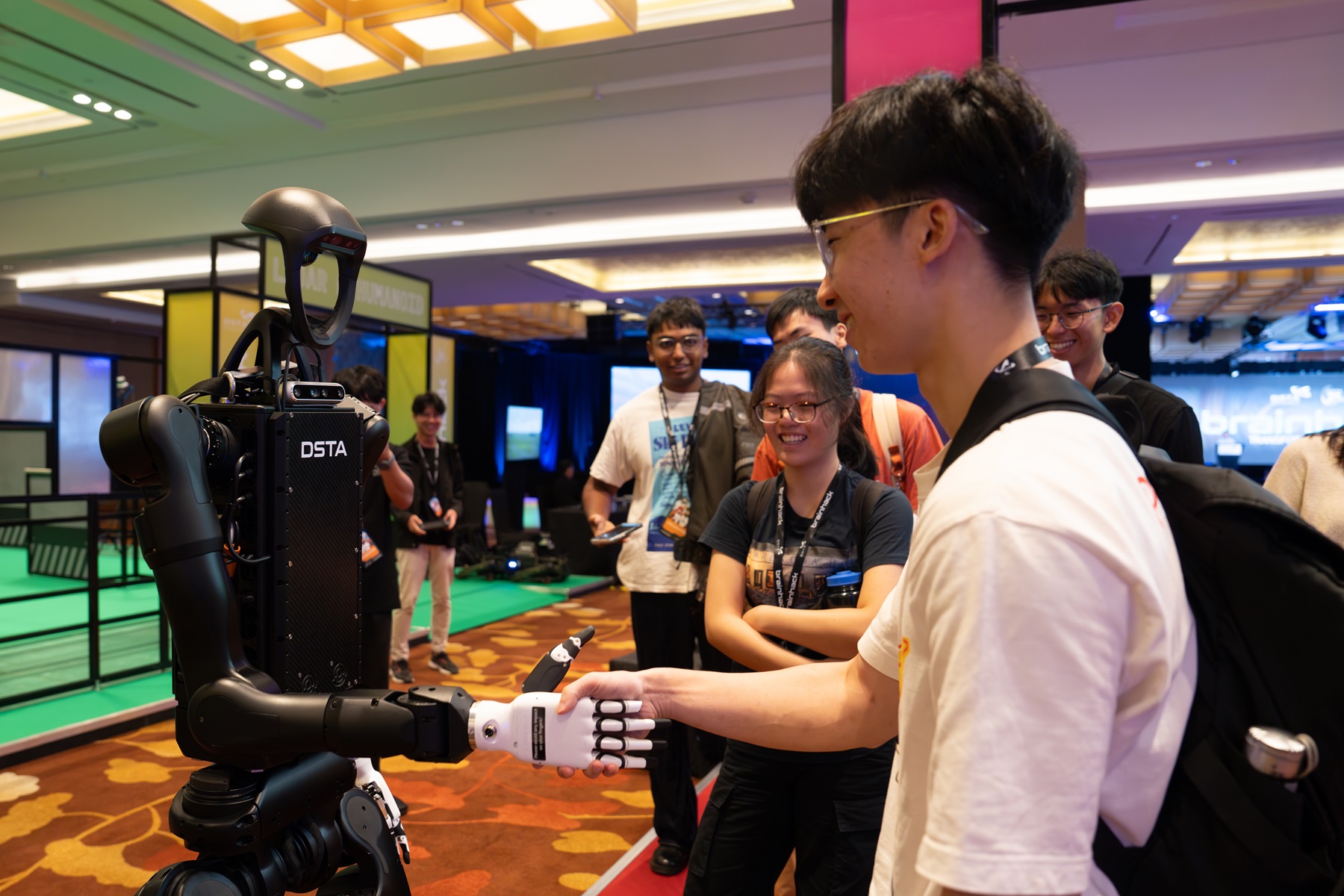
Participants had the opportunity to interact with a humanoid robot at the Tech Showcase.
Under Compete, students competed in a Jeopardy-style Capture-The-Flag competition at the Cyber Defenders Discovery Camp (CDDC), defending against simulated cyber threats while tackling various types of challenges.
“BrainHack has given me the chance to challenge myself and grow while having fun with others who share that same drive. It’s also made me more certain that I want to pursue a career in the defence tech field,” said Ethan, a participant at CDDC and a student at the Singapore Institute of Technology.
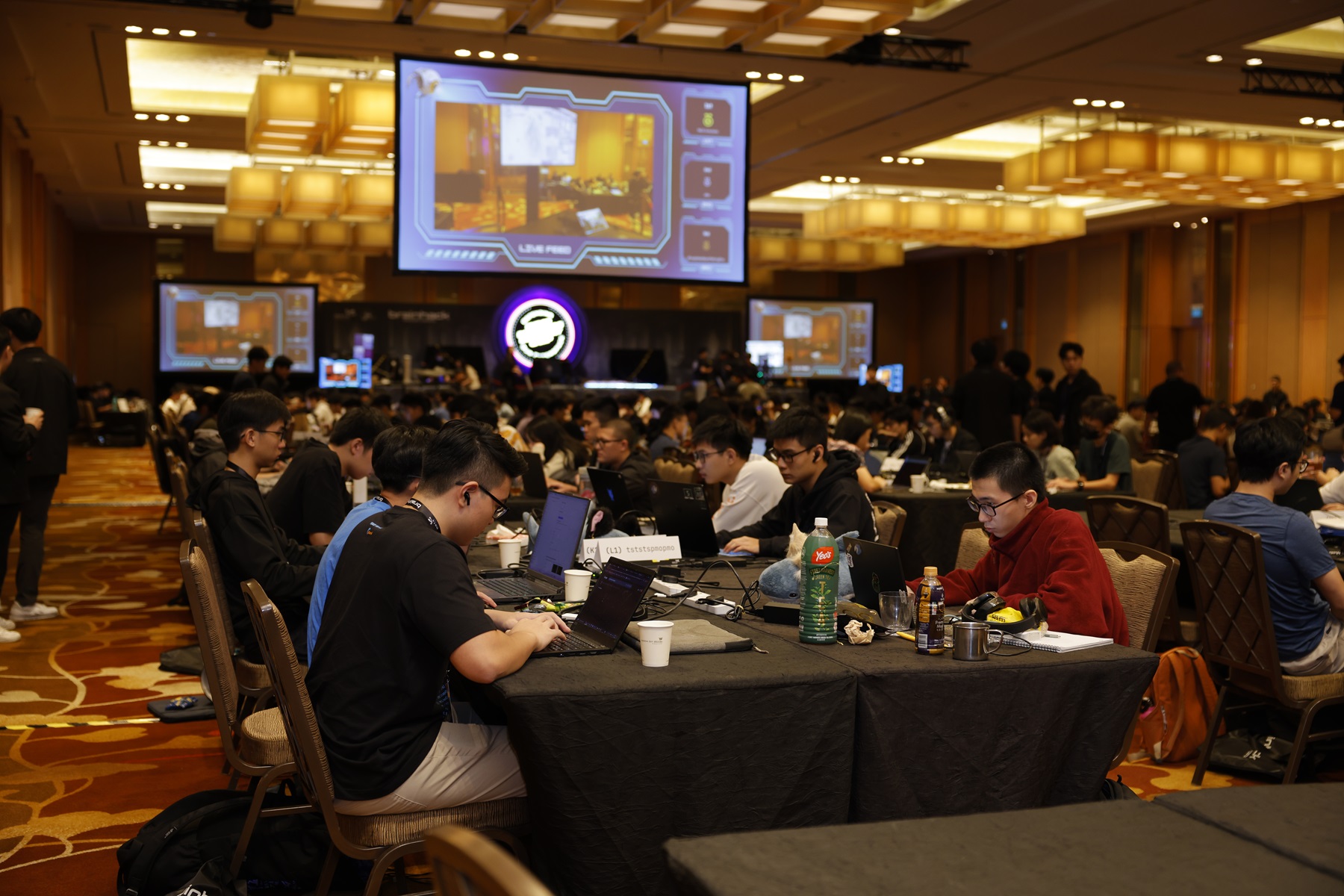
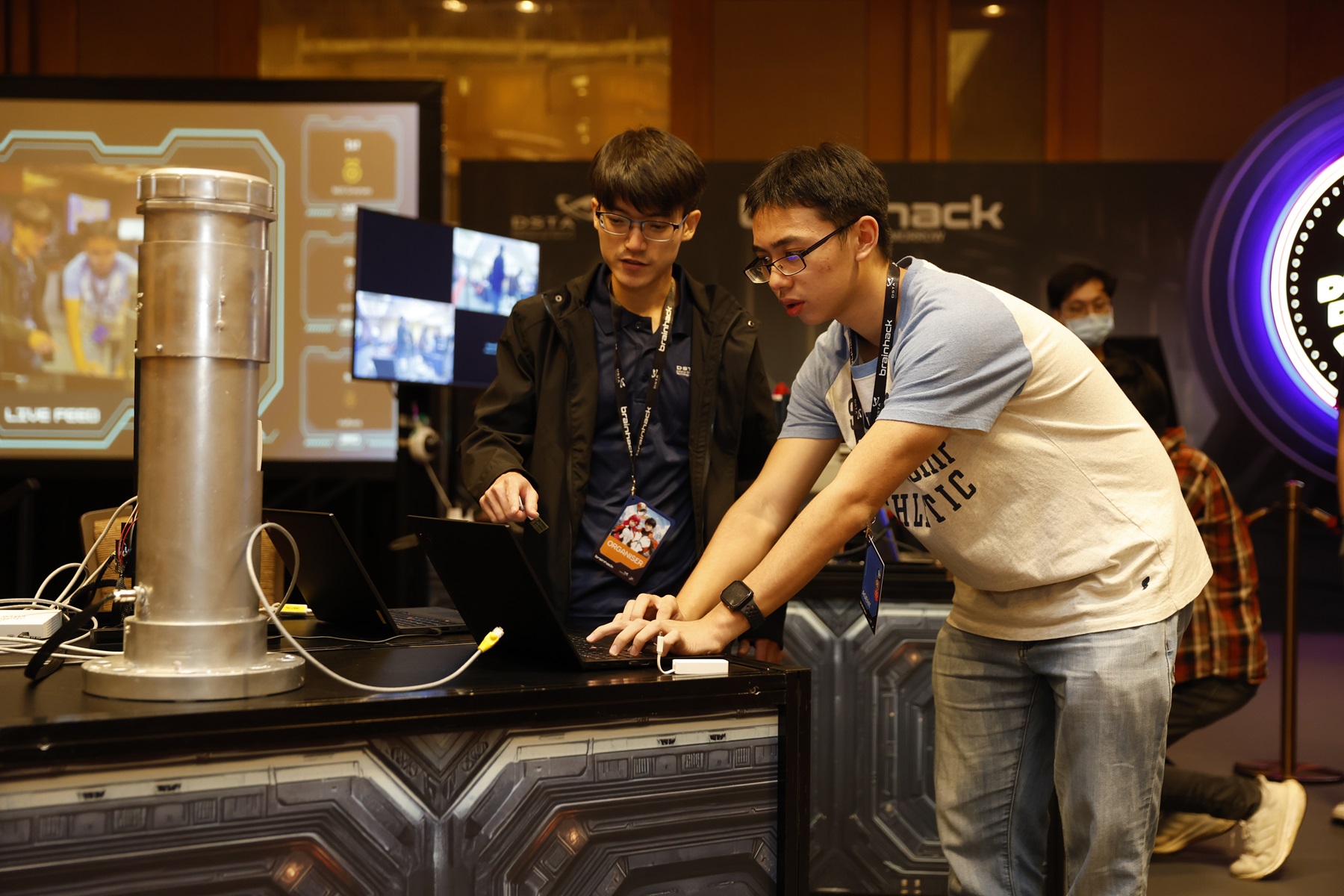
At Today I Learned – Artificial Intelligence (TIL-AI) camp, participants trained and deployed artificial intelligence (AI) models using various techniques, such as reinforcement learning, to solve real-world tasks.
Denzel, a participant at TIL-AI and a student at the Nanyang Technological University (NTU), shared: “I did not have much prior knowledge of training AI models, but after going through all the learning materials that BrainHack provided us with, I was able to pick up the basics and create a model of my own.”
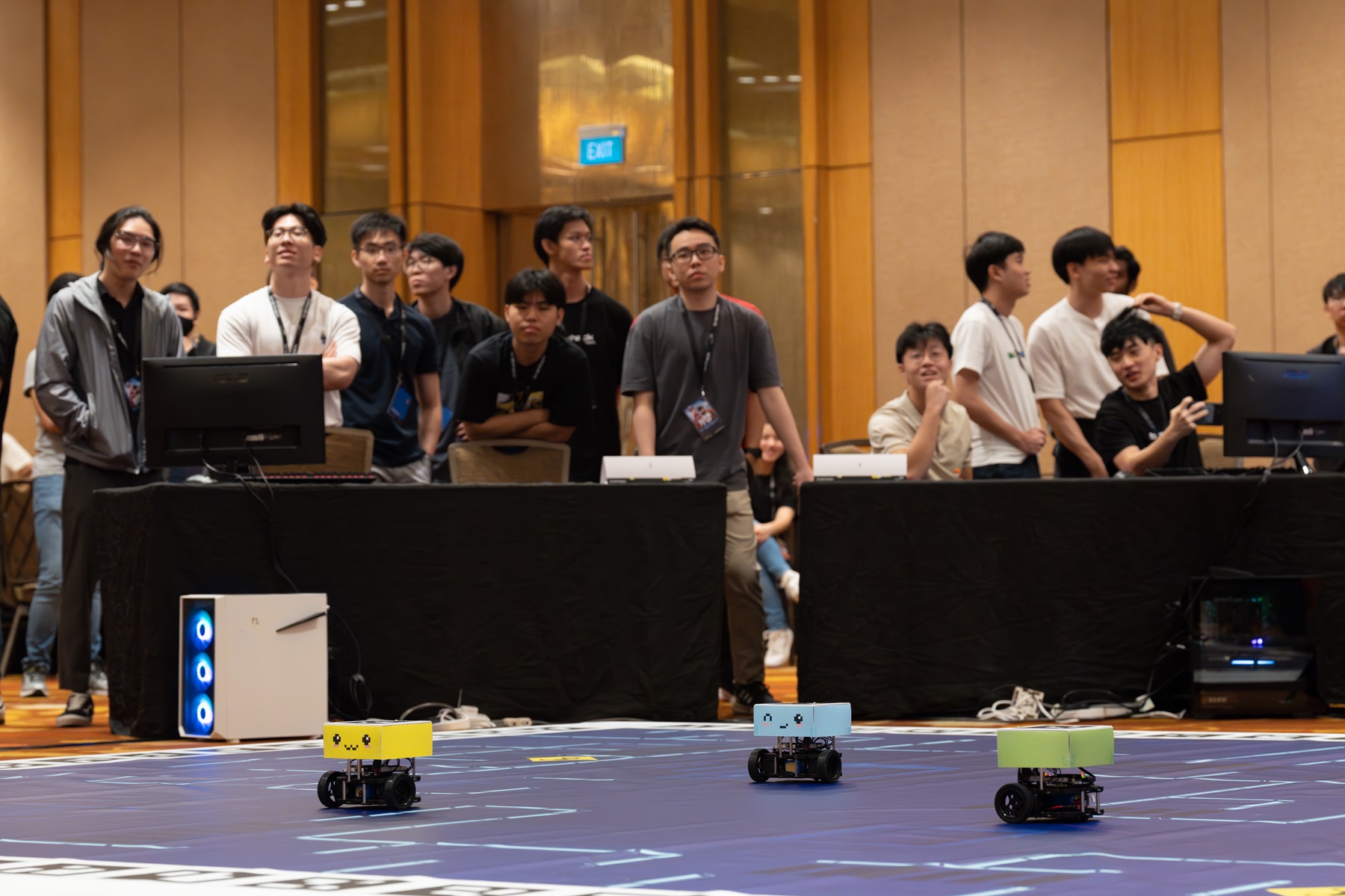
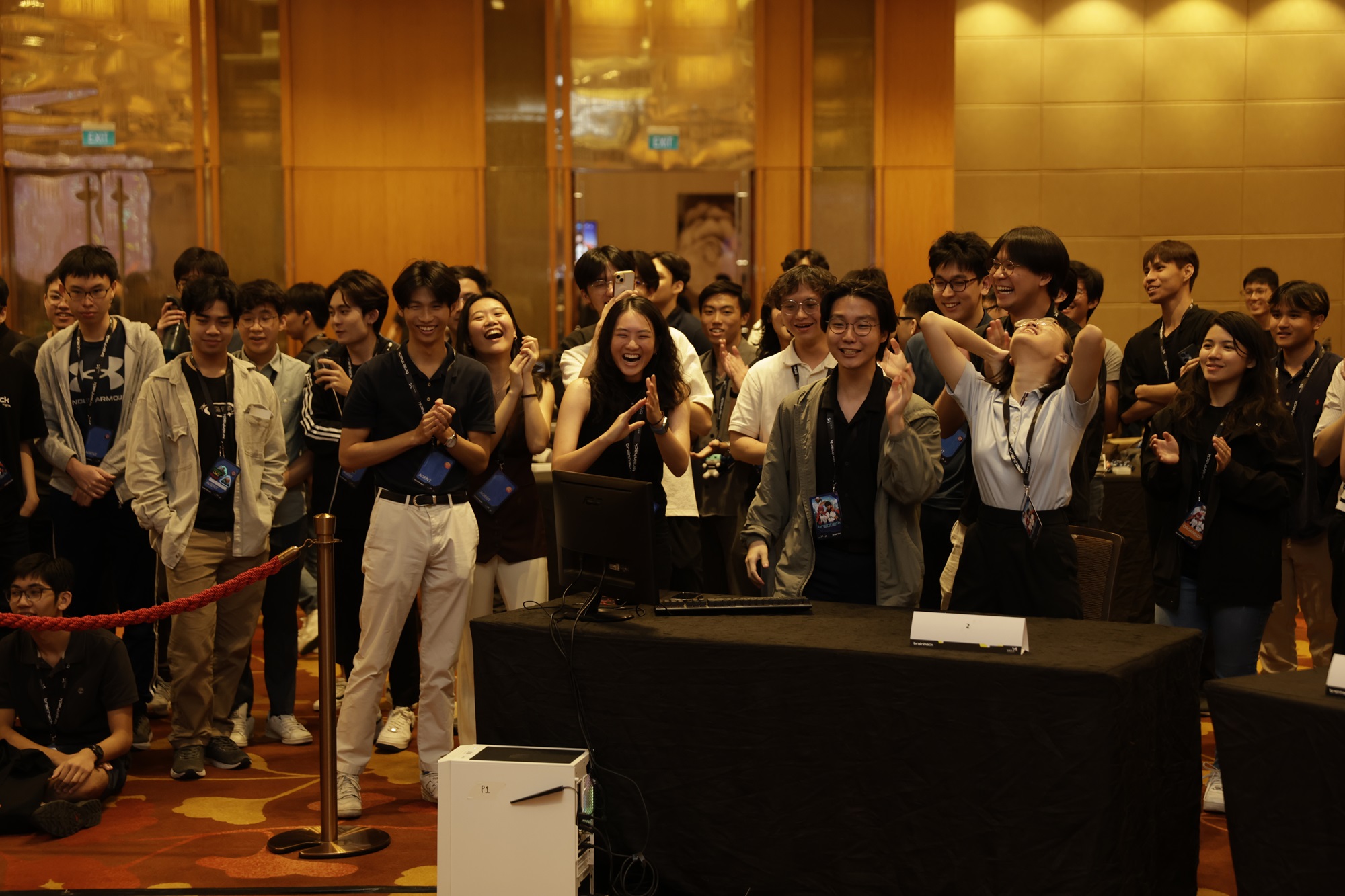
Showcasing their ideas and development skills, participants at CODE_EXP brainstormed and rapidly prototyped mobile apps to real-world problem statements. Finalists then pitched their apps to a panel of judges.
Zeng Dou, an undergraduate at the National University of Singapore (NUS) and a participant at CODE_EXP, shared: “The learning platforms, community we interacted with, and topics at the hackathon were all very interesting. A key takeaway and something I learnt at BrainHack’s CODE_EXP is that the presentation is just as important as the tech aspect when developing an app.”
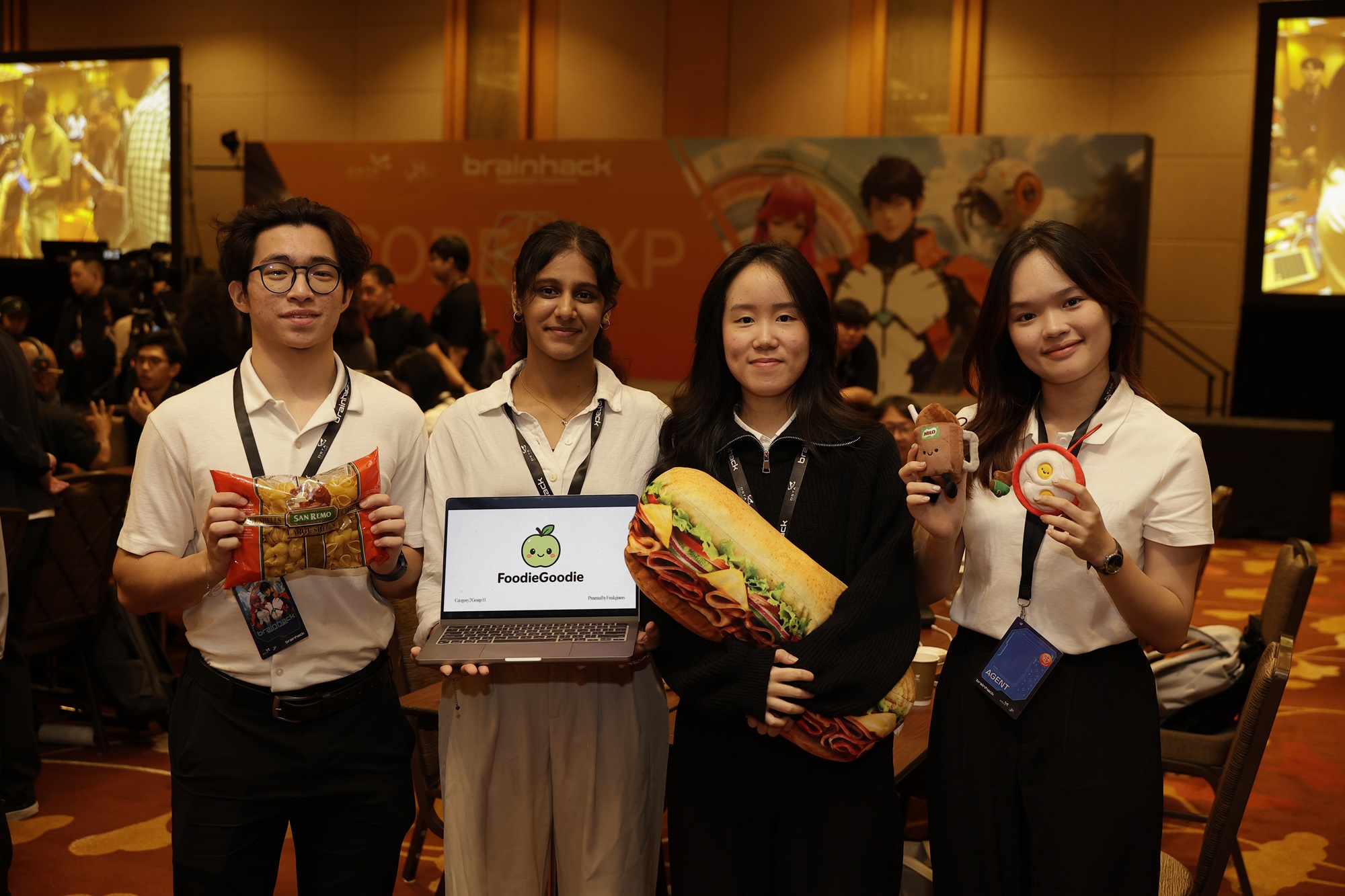
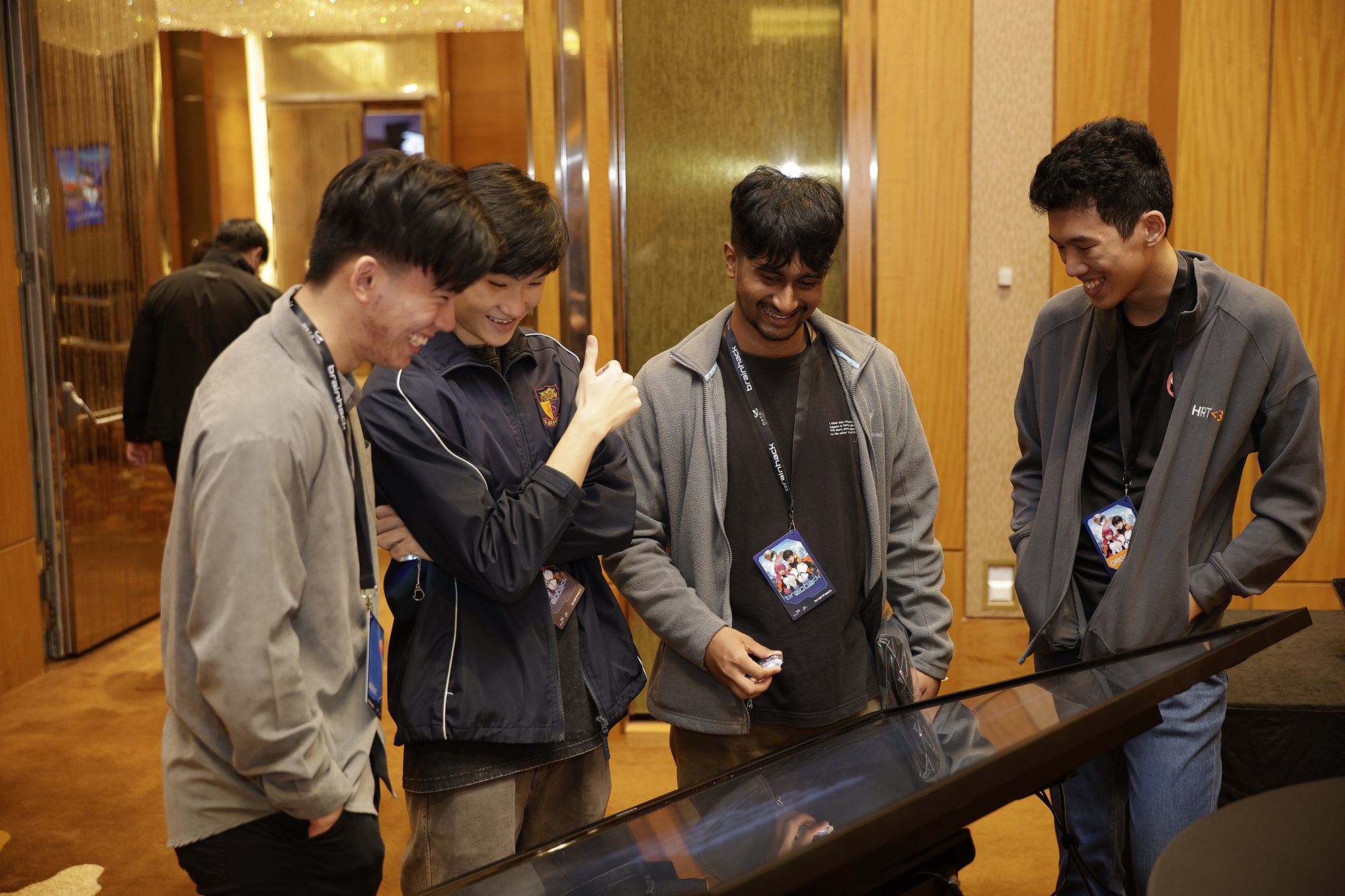
The SpaceCube camp taught participants about space technology and the development lifecycle of satellites. Students got to develop, integrate and assemble their very own CubeSat using different components. They also employed systems engineering skillsets to develop a system capable of delivering mission requirements, while taking into account performance trade-offs and limited resources.
To add to the excitement, they also had the rare chance to interact with astronaut Dr Sian “Leo” Proctor in a meet-and-greet session.
“SpaceCube involves exploring new things like playing with satellites and receiving data. I found it very interesting to see how everything works because I don’t see this type of content in the classroom,” said Susan, a student from Raffles Girls’ School and a participant at SpaceCube.
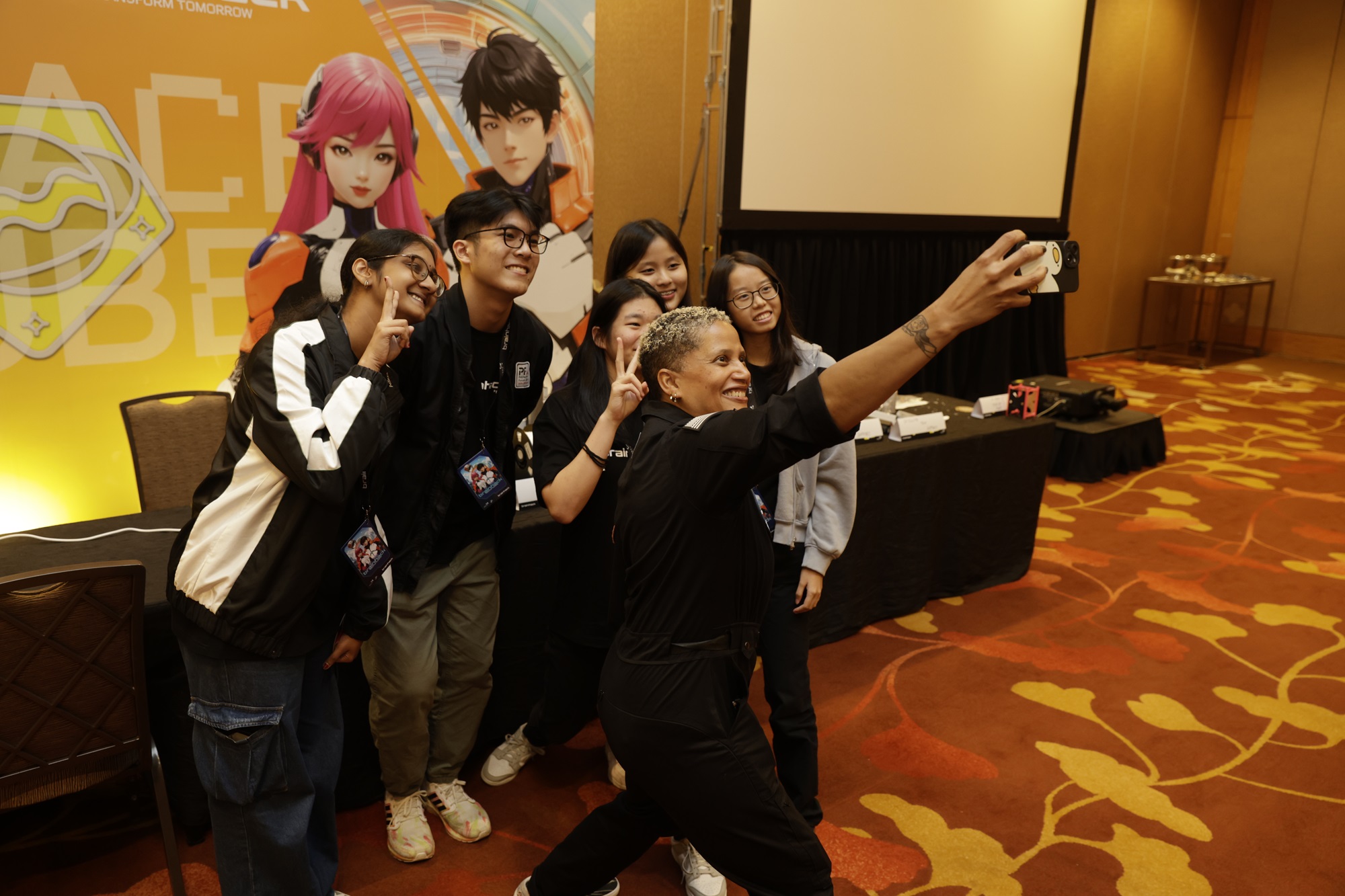
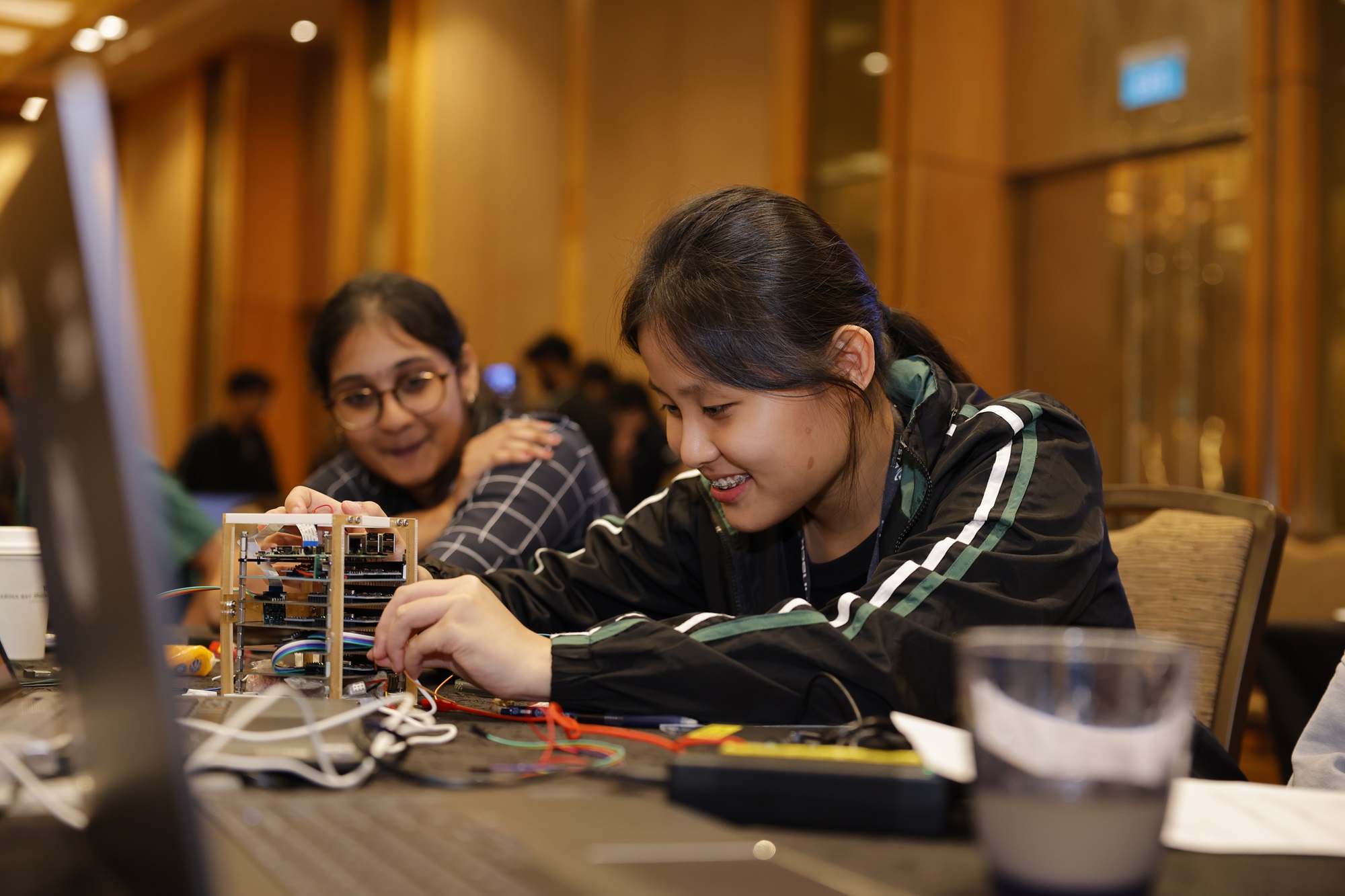
This year’s BrainHack also offered three workshops under the Learn pillar – a SeeTrue workshop about generative AI and its role in disinformation; Counter Drone workshop which taught students how to develop their own counter drone systems to defend against malicious threats; and Drone workshop where participants received hands-on training in programming algorithms for the autonomous control of multiple drones.
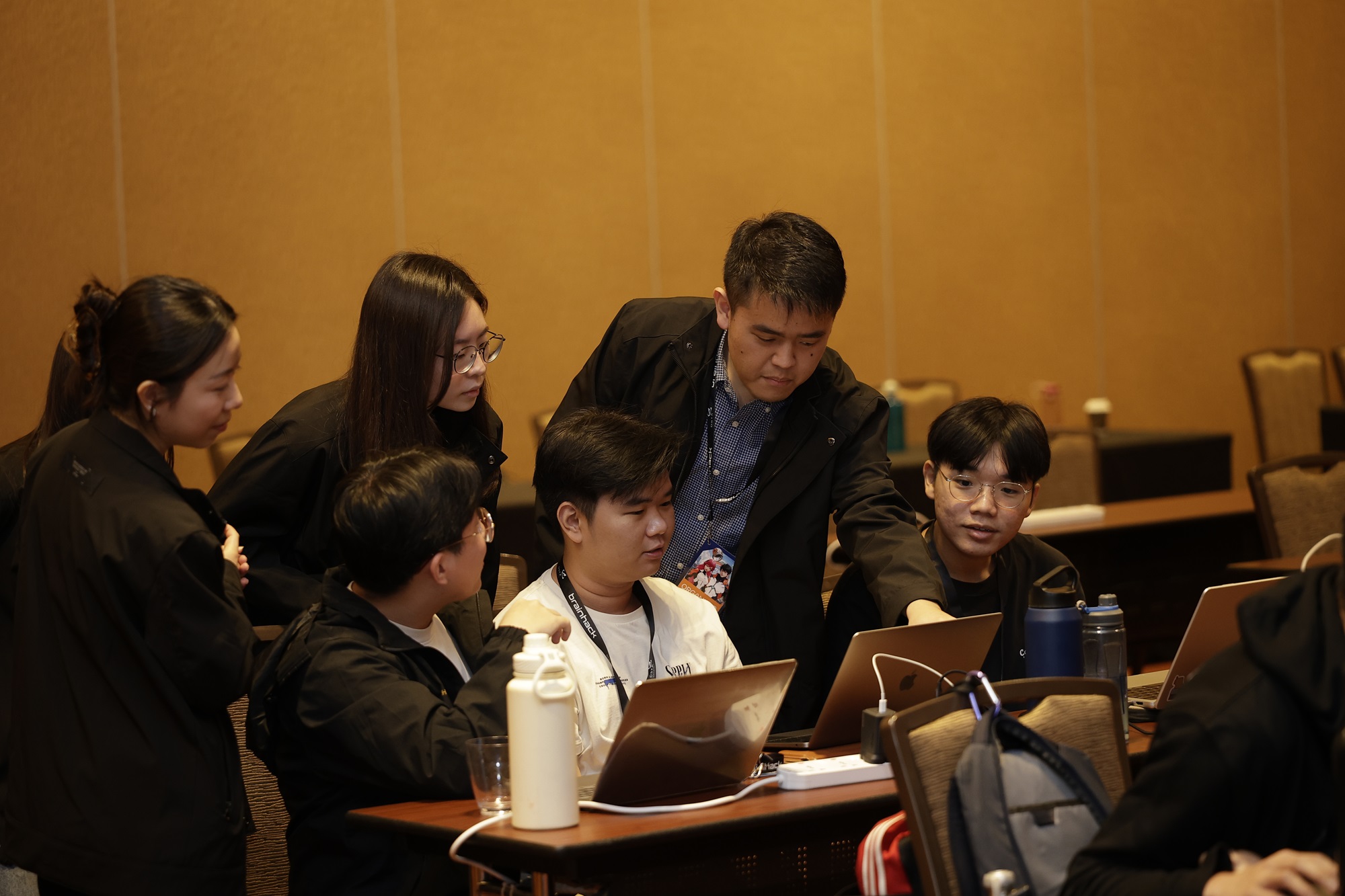
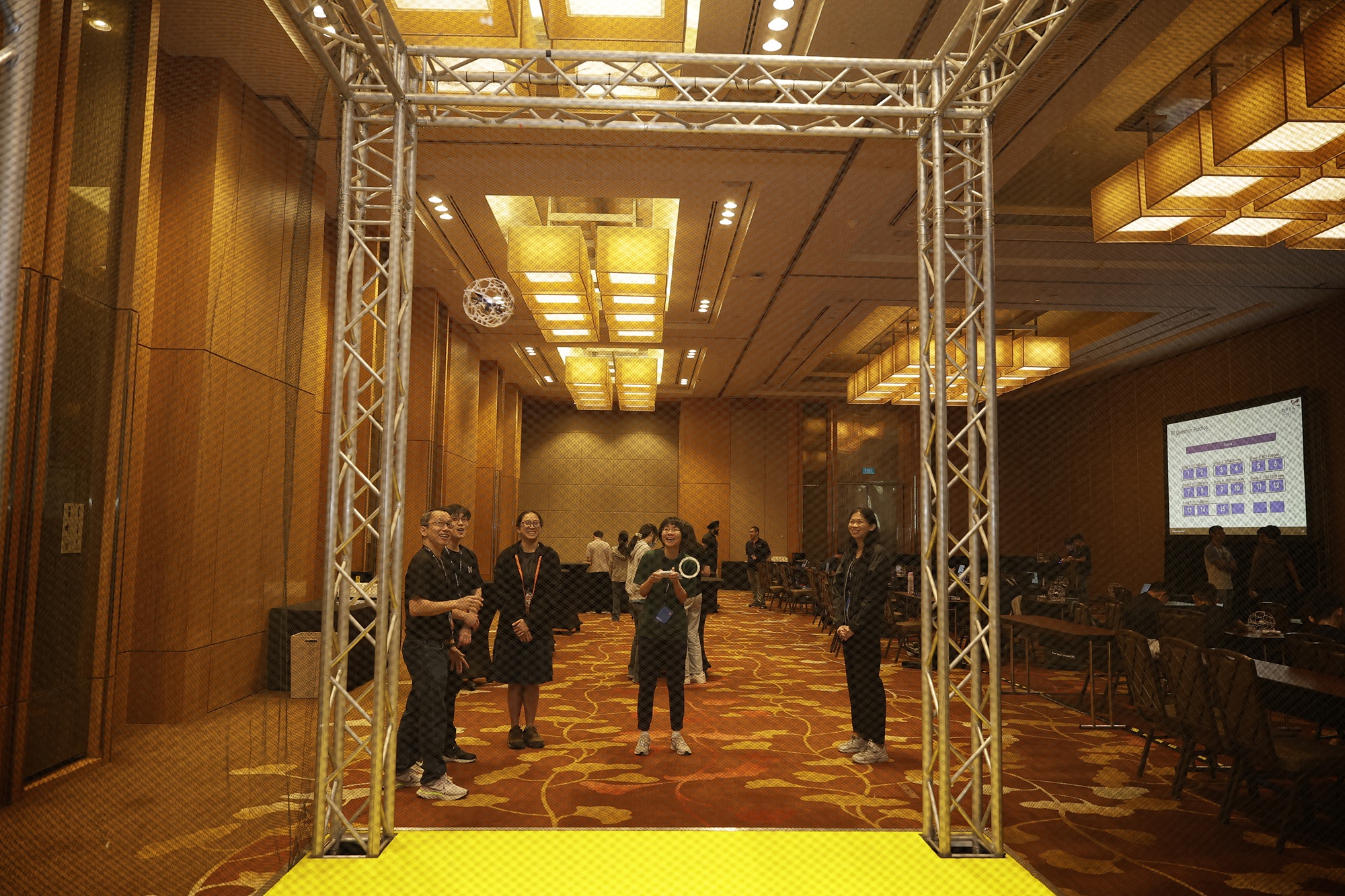
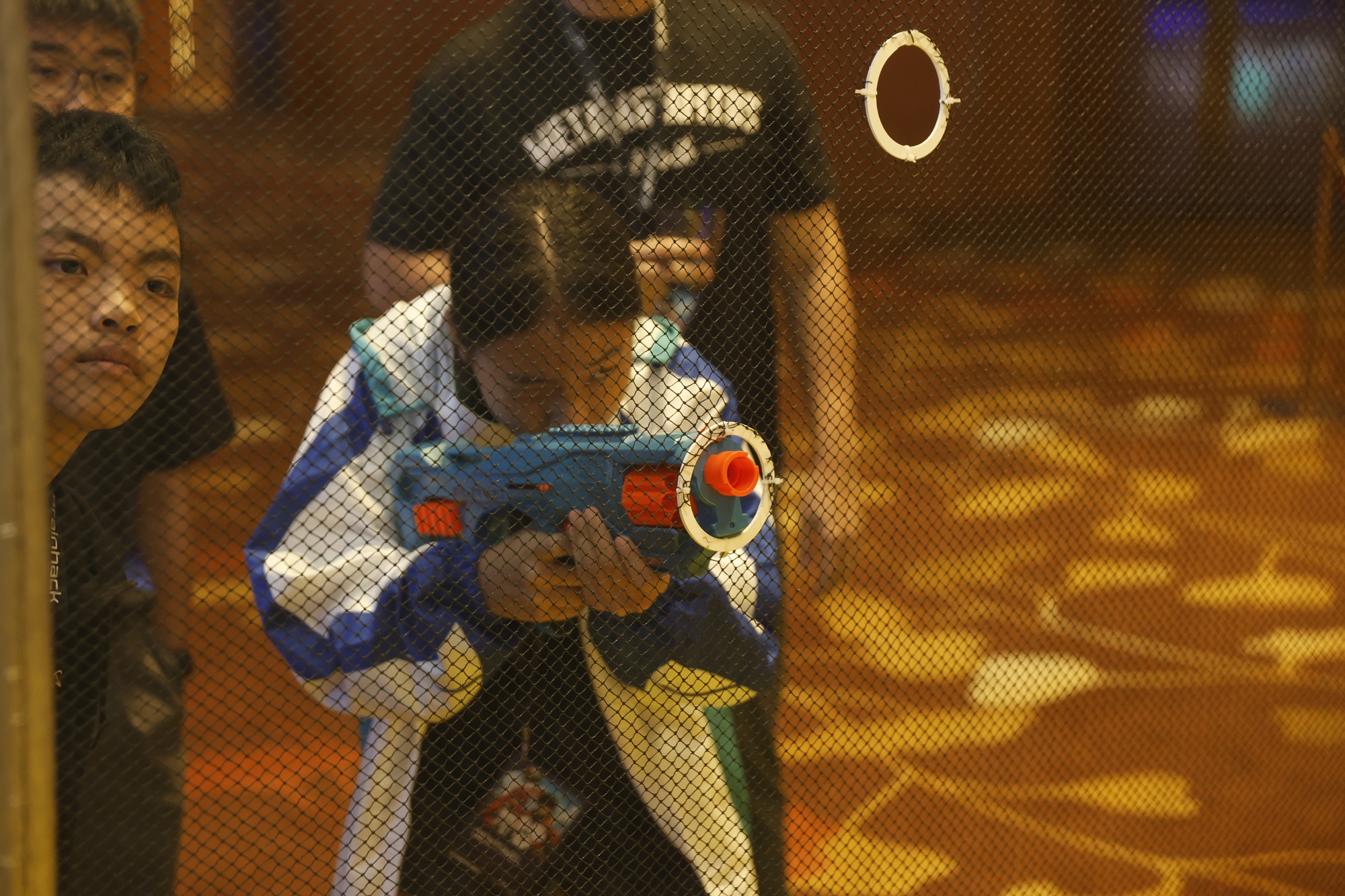
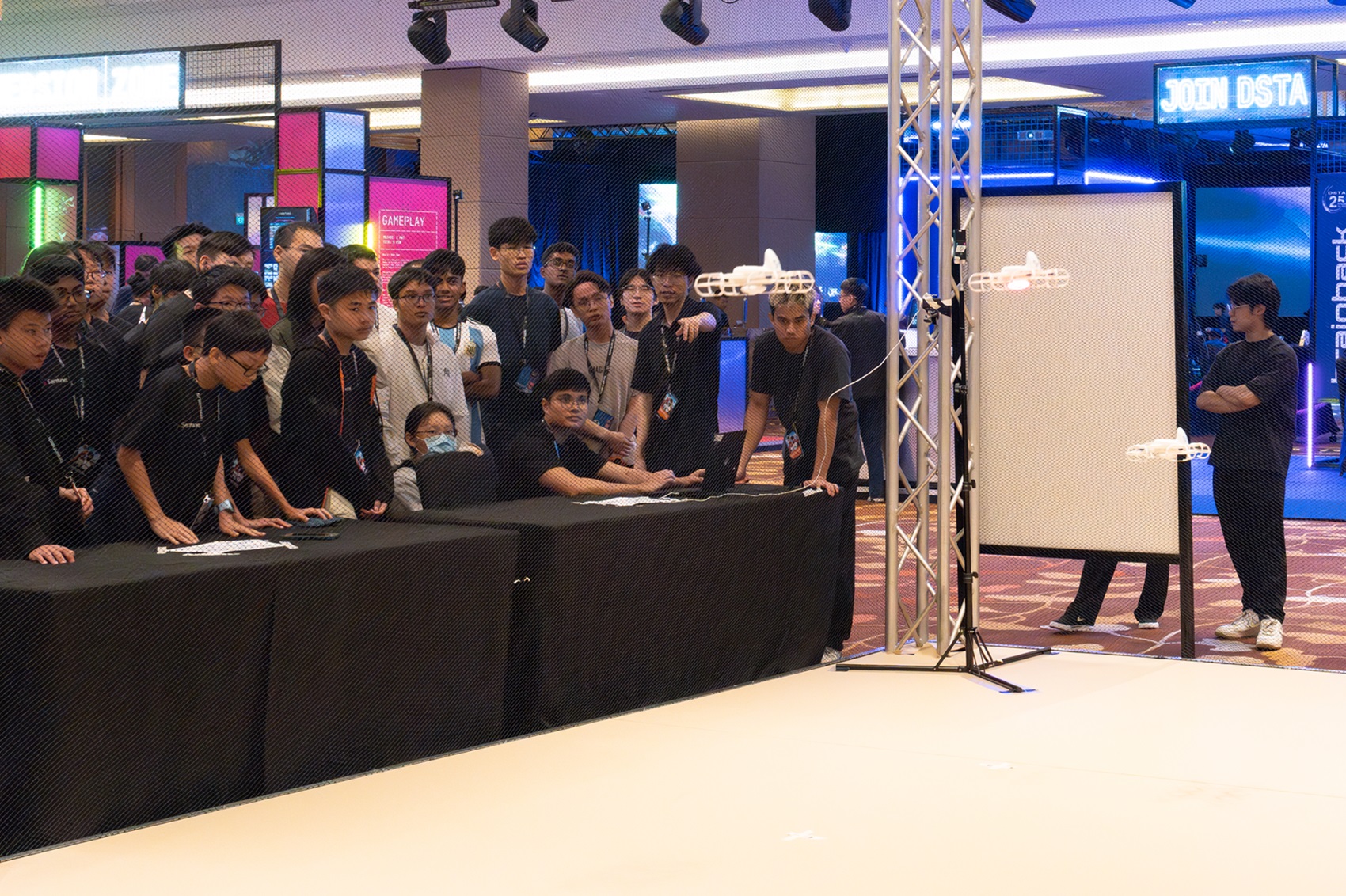
Throughout the learning festival, participants also got up close and personal with a diverse range of exhibits. Highlights included a light detection and ranging (LiDAR) obstacle course which included a humanoid robot, a maritime robotics booth and an immersion zone where teams came together to explore extended reality (XR) together in two-player simulations.
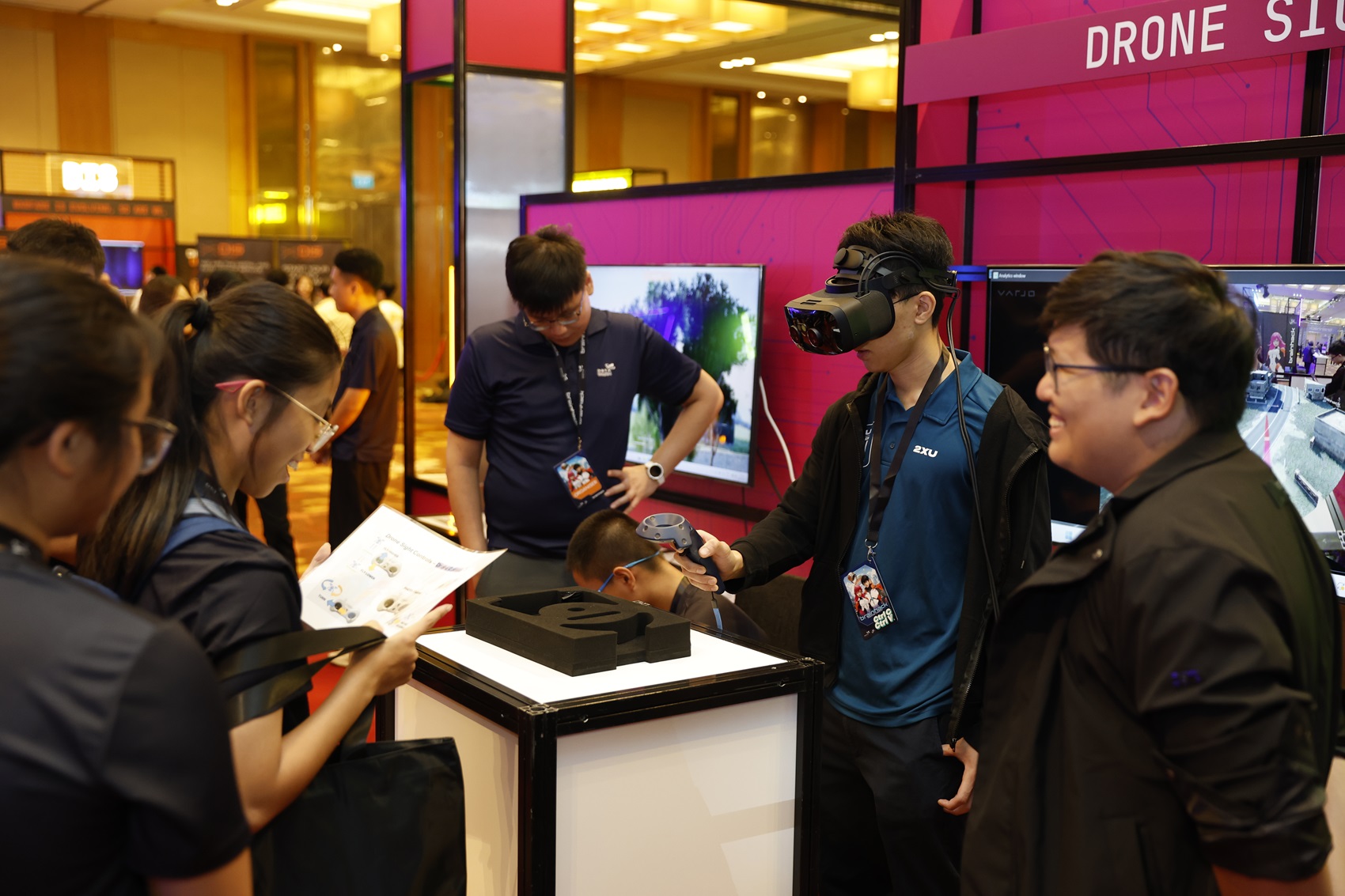
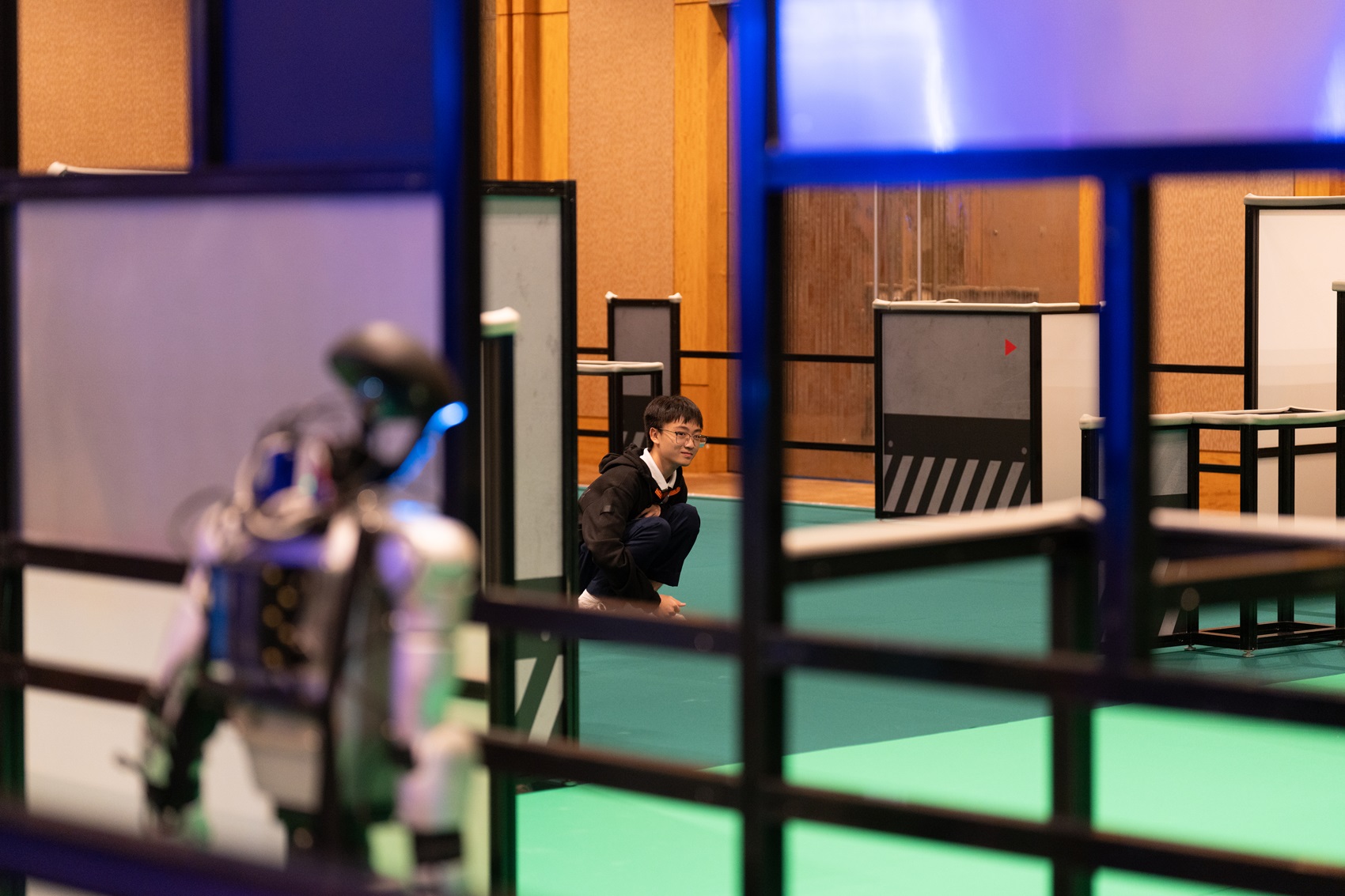
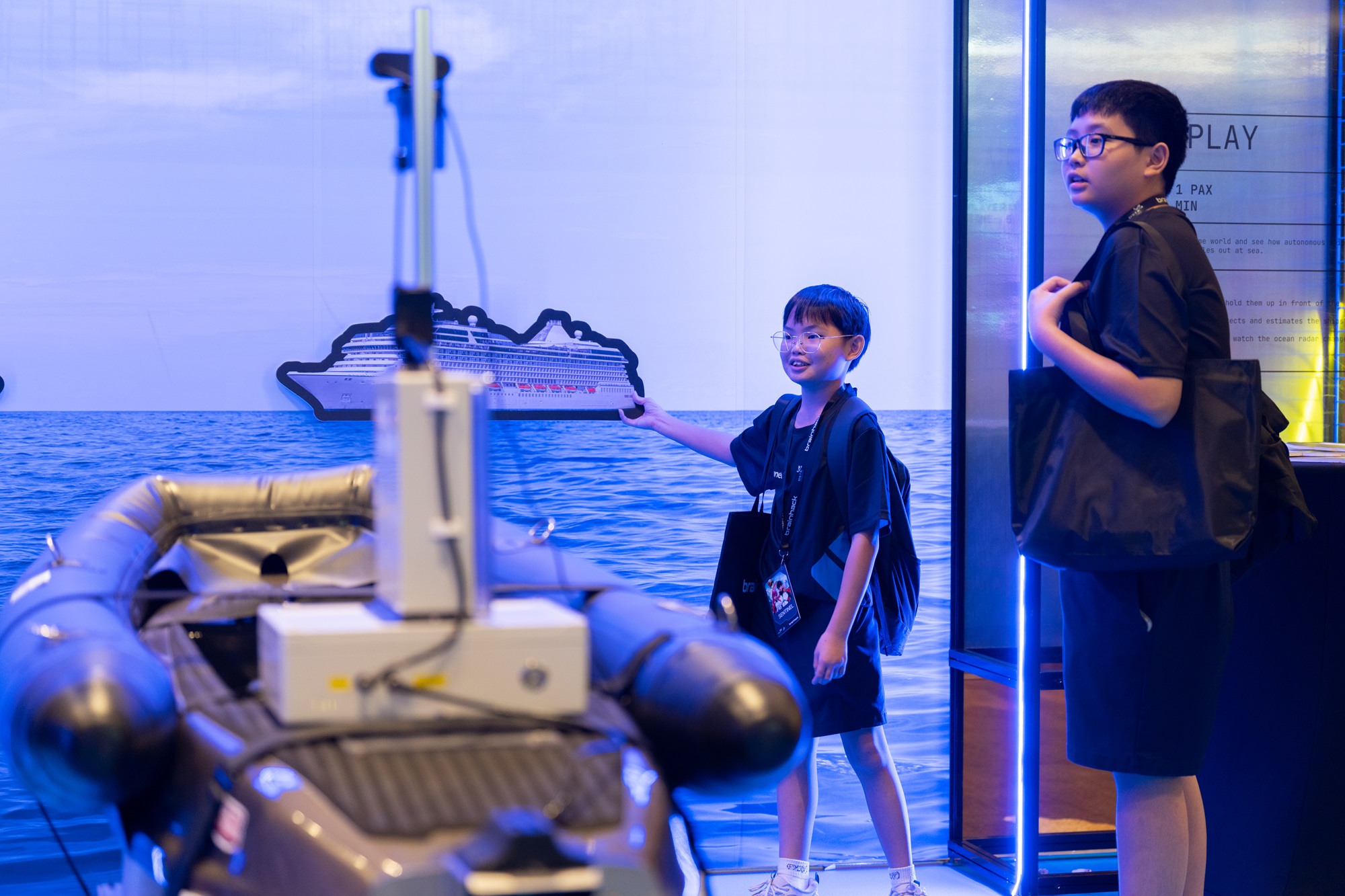
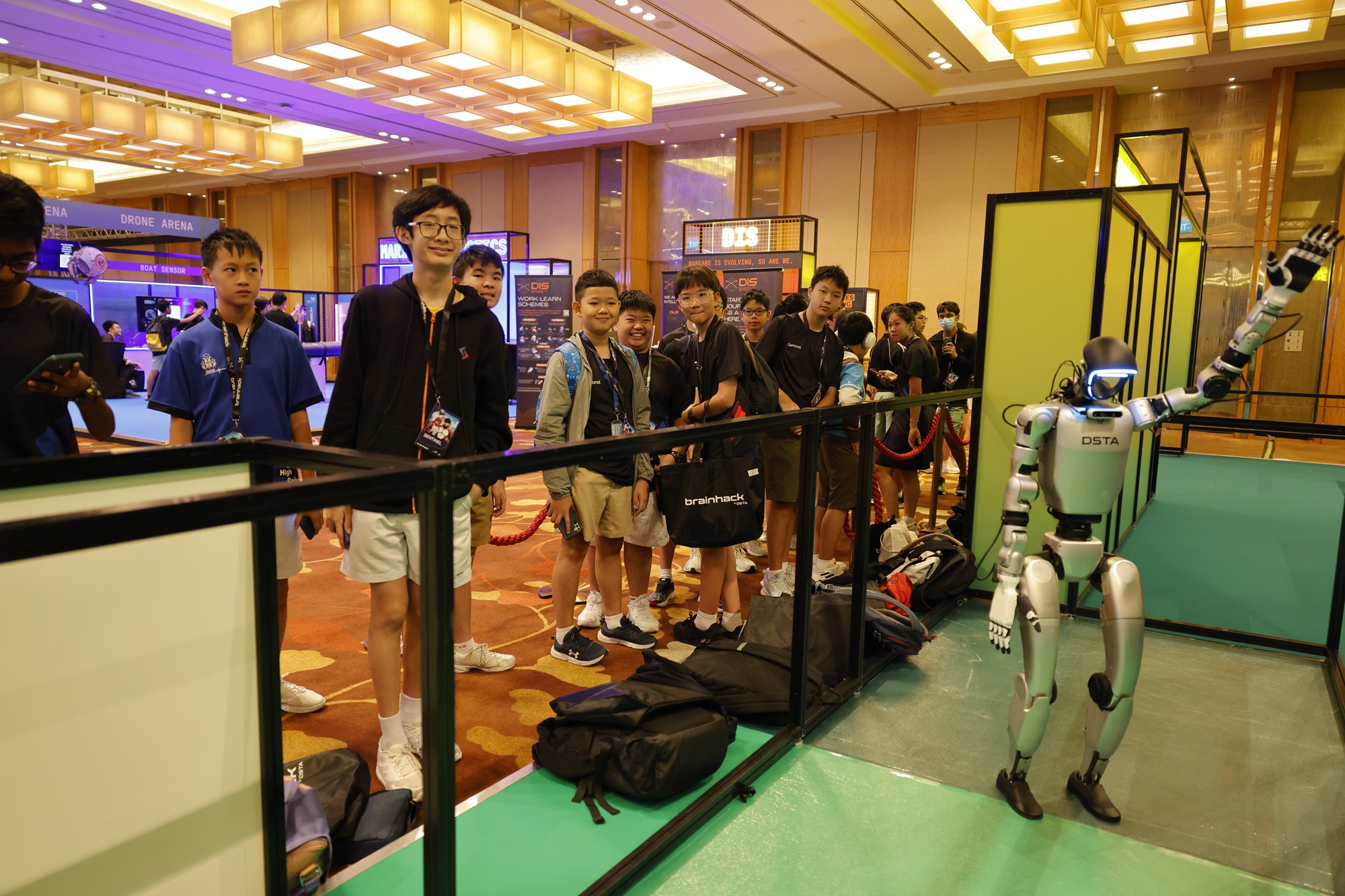
Felicia, an undergraduate at NUS, shared: “The tech showcase sparks creativity. These are things I rarely get to see in real life and in school. It also exposes us to new ideas and creations early on so that in the future, we can be inspired to create something similar or even better.”
Apart from the tech showcase, there was also an exciting lineup of speakers from the industry, government, and academia. The speakers shared valuable insights on the latest innovations and trends on topics such as generative AI, the future of extended reality, and the integration of AI in cybersecurity.
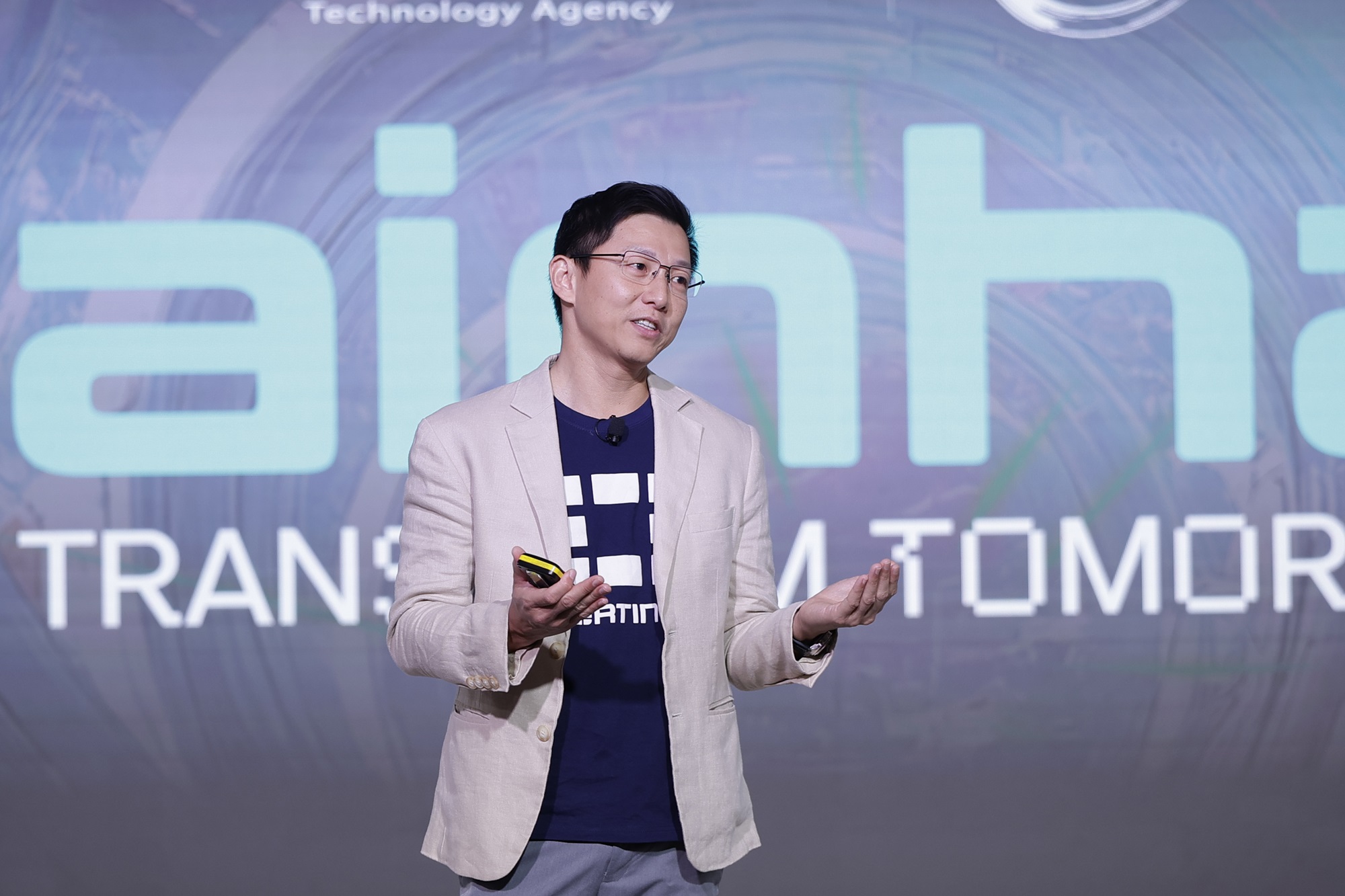
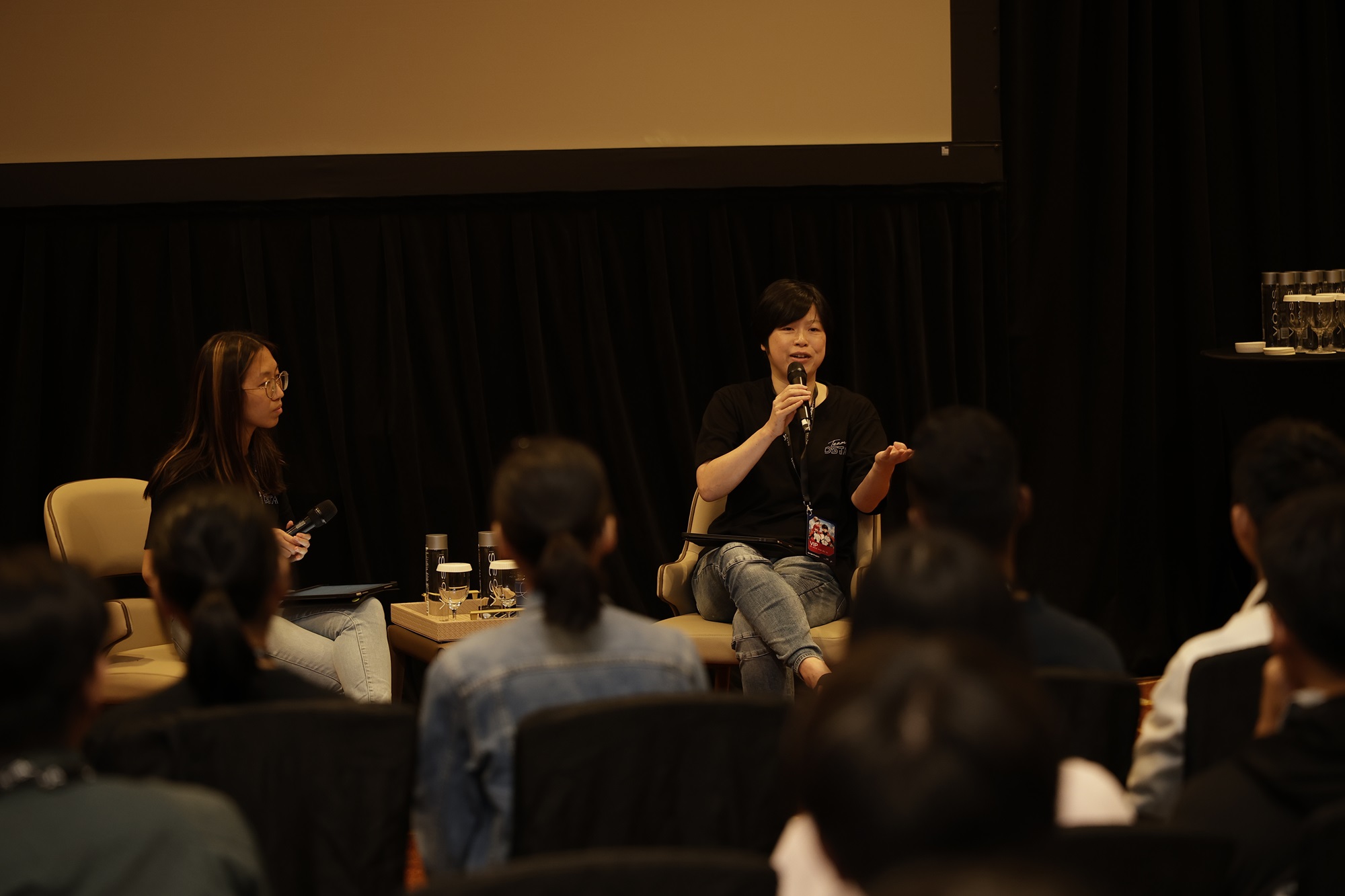
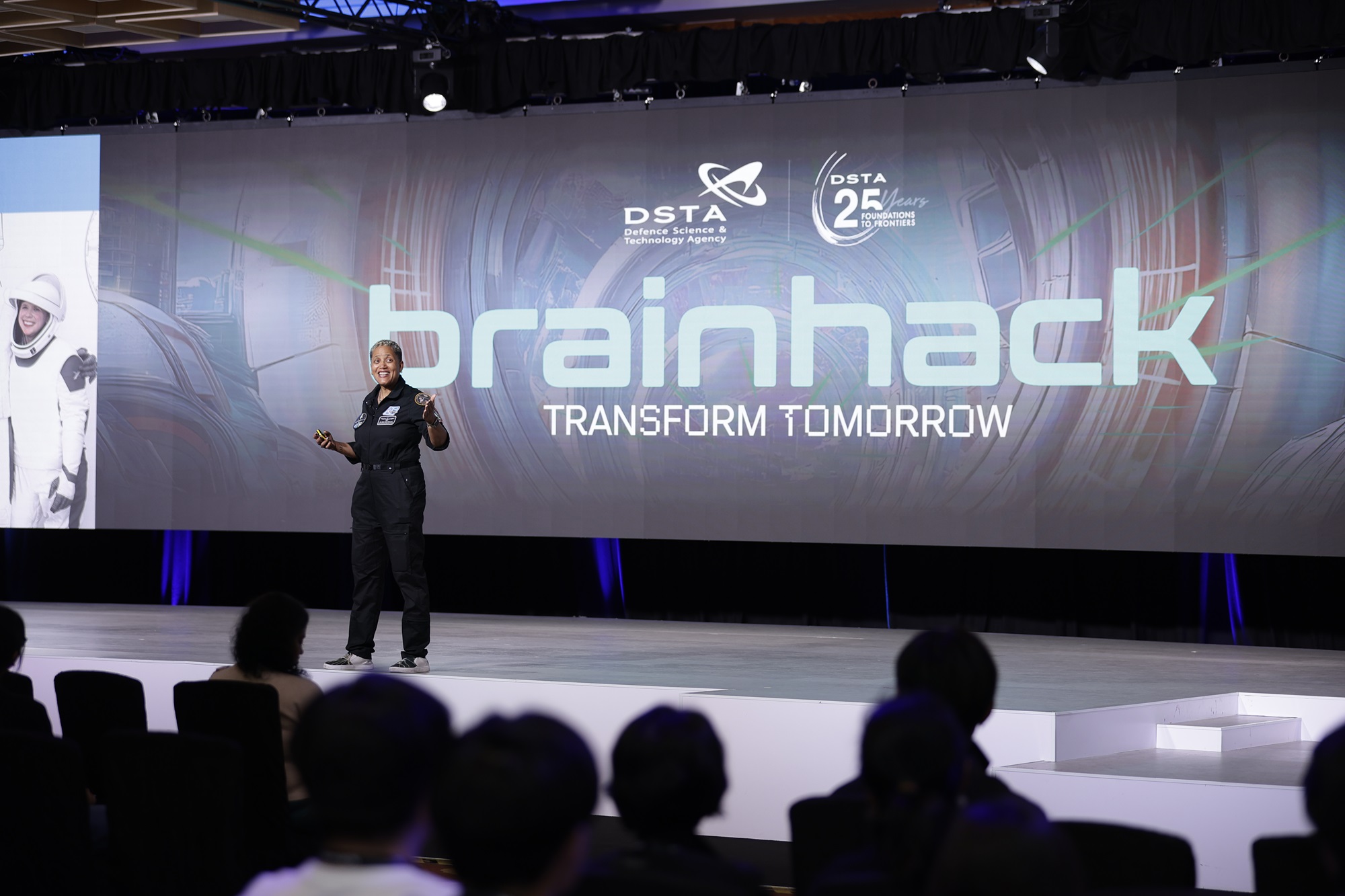
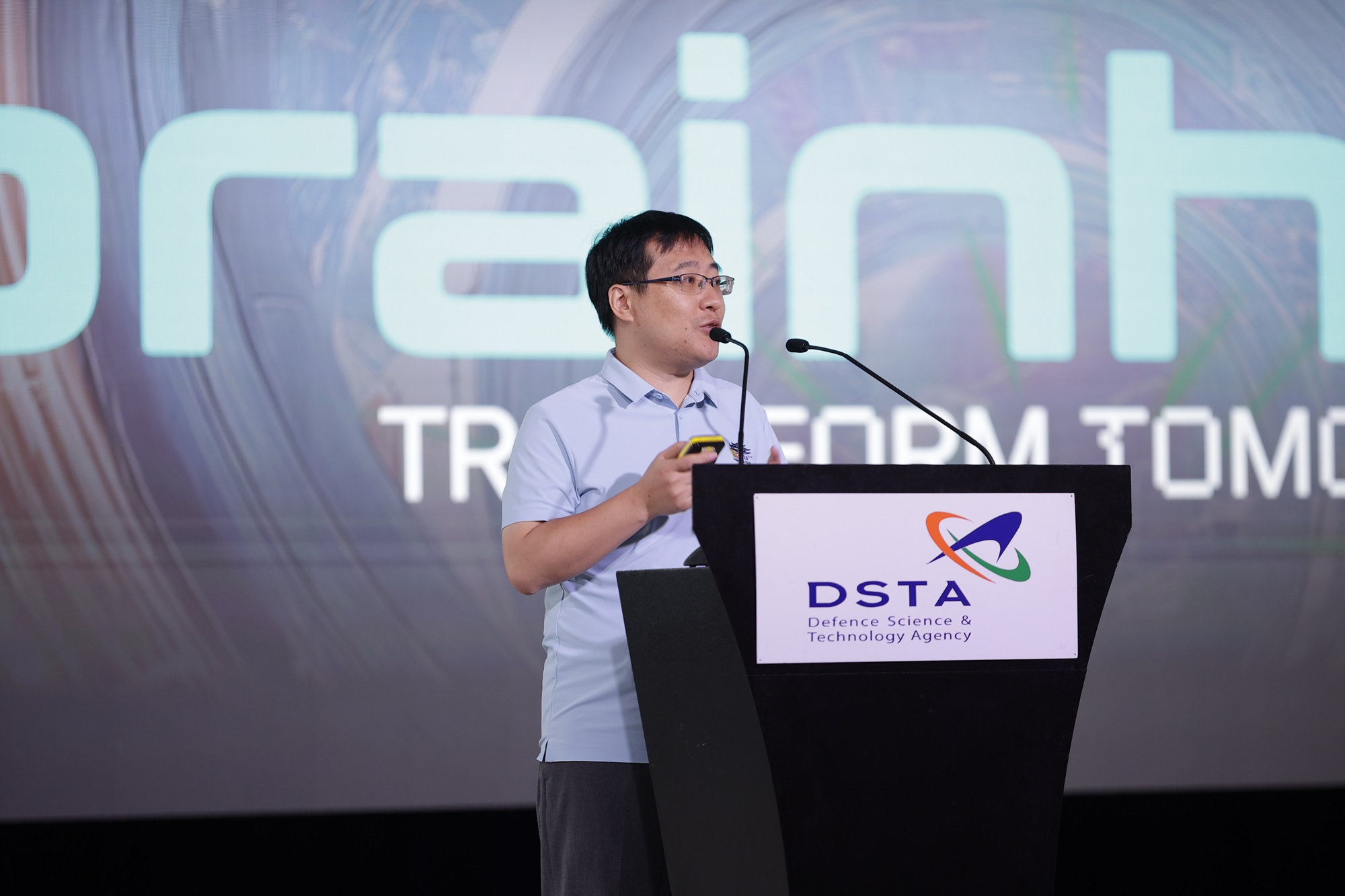
Some of the speakers included Tony Yeo from Fortinet (top left), Deputy Chief Executive (Information) Gayle Chan from
DSTA (top right), Astronaut Dr Sian “Leo” Proctor (bottom left), and Dr Fengbin Zhu from 6Estates (bottom right).
This year’s BrainHack was also a special edition as it commemorated DSTA’s 25th anniversary. Beyond the various activities, students also got to learn about DSTA’s history, innovations and stories through a special showcase and drone lightshow.
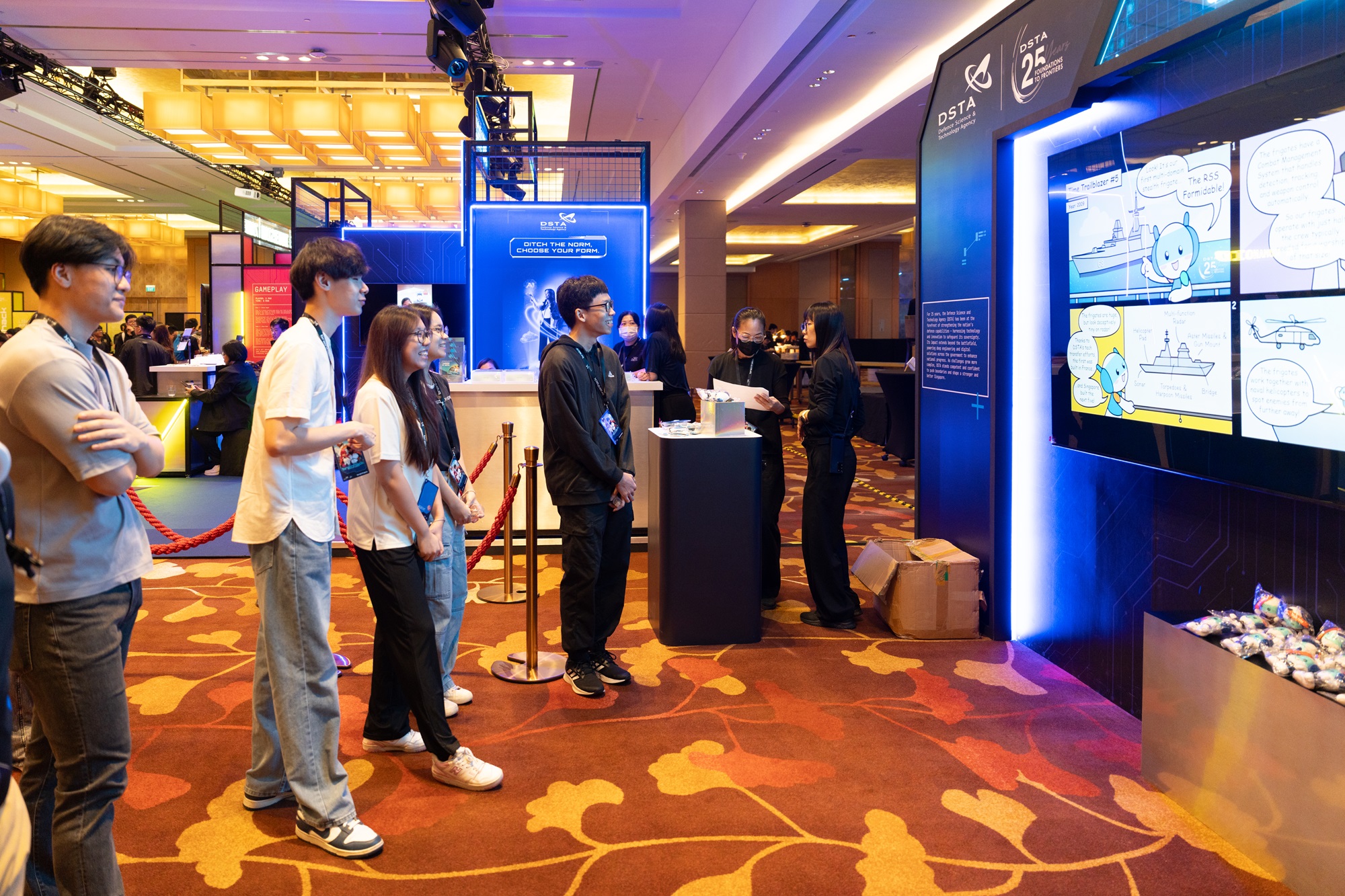
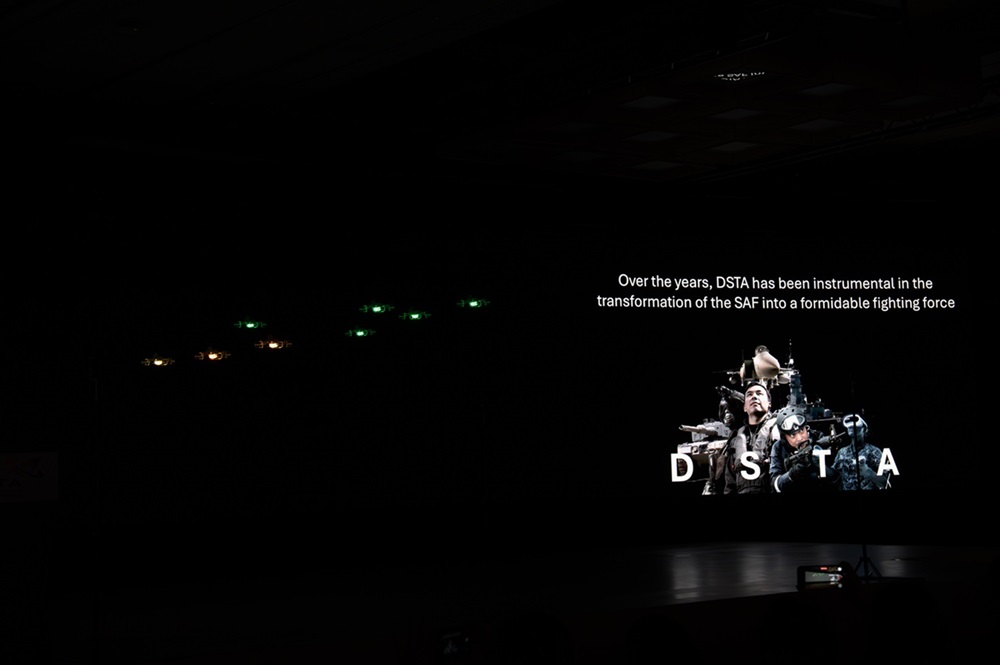
Want to get in on this cool and exciting tech? Look forward to more exciting activities being lined up at BrainHack 2026 here!
Gallery
